Are Oxford and Cambridge really better than every other British university? How do the likes of Leeds, Manchester and Bristol compare? And what about up-and-coming institutions such as the University of Leicester?
Today, we publish The Mail University Guide rankings for 2025 – and there are some big surprises in the results. Our guide is the most comprehensive, broadly based, in-depth analysis of the UK’s leading universities you’ll find.
The Mail ranking is based on recent performance data in areas such as teaching and research, as well as the views of the 346,000 final-year students. Plus, we’ve crunched the numbers to identify universities where students stand the best chance of getting a high-skilled job when they graduate, the salaries they will earn (useful for paying off that student loan) and whether they feel, 15 months after leaving, that their careers are on track.
As well as today’s article showcasing the full rankings (see below), Mail+ subscribers can access The Mail University Guide where there is a wealth of further information and reading as well as our exclusive University Finder tool.
Here, you can search all the UK’s leading universities and personalise the results according to the factors YOU value most – even including criteria such as accommodation cost and university size.
And for the first time this year, you can use the University Finder to show which universities are ranked highest for the subject you want to study. We’ve assessed universities across 78 of the most popular subjects, based on the key factors that will shape your time at university.
Read the full list below or click here to launch our interactive University Finder – and personalise the rankings to find the university best suited to you. Plus, search the best universities by subject
1. Imperial College London

Overview
Imperial retains its place at the head of our university ranking for a second year, pulling further clear of Oxford and Cambridge. In the past 12 months, it has also become the top-ranked British institution (and second globally) in the 2025 edition of the QS World University Rankings. Imperial recruits the best students from around the world in science, technology, engineering, mathematics, medicine and business (or STEMMB as it likes to call it). We named it University of the Year last year off the back of its rankings success, but the wider reasons for the award remain as true today as they were 12 months ago. These include the university’s strong social conscience. It takes widening access seriously, with one of the most progressive bursary programmes in the UK. It also makes reduced offers to students who qualify under its contextual admissions criteria, which have been beefed up this year. The university is based in South Kensington, on a campus adjacent to the capital’s museum district, and has nine other sites around the capital. Imperial’s graduates are in demand, with more going into highly skilled jobs than those from any other university, and commanding the highest salaries, too.
2. University of Oxford
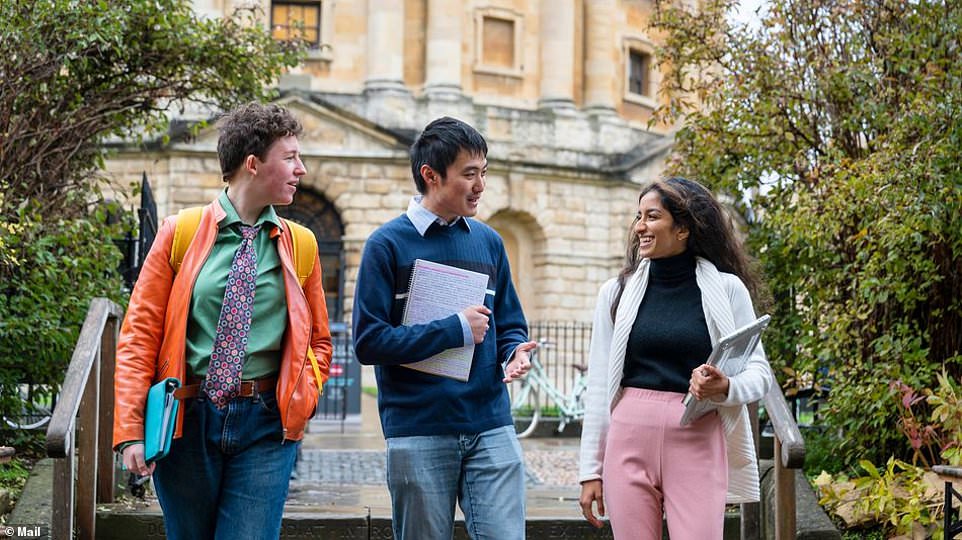
Overview
The social demographic of Oxford is changing after a concerted effort to open up the university to a wider range of students. In 2023, 68% of the UK undergraduate intake were educated in state schools, 21.2% came from the most disadvantaged backgrounds, 7.6% had qualified for free school meals and more than a quarter were black, Asian or from other minority ethnicities. Oxford’s determination to diversify its intake has not led to any compromises in its desire to recruit only the brightest, however. Most of the 23,000 or so who apply each year will go on to achieve at least AAA at A-level, but the university prides itself on the fitness of its admissions process (featuring examinations and interviews) to identify the students that will truly fly here. Academic life revolves around weekly tutorials, which take place individually or in small groups in college. There are 32 undergraduate colleges spanning the ancient and modern, big and small, traditional and relaxed, and not all subjects are available in each. Expressing no college preference in your application is also an option. But be quick. A deadline of October 15 is just another way in which Oxford sets itself apart from the crowd.
3. University of Cambridge

Overview
The scrapping of state school admissions targets at Cambridge, announced earlier this year, is not a sign that the university no longer cares about fairness in its entry processes. Instead, it is evidence of the success of its policies over the past decade, which have gone a long way to eradicating the dominance of private schools, with 72.9% state school admissions in 2022. Based on the words of new vice-chancellor, Professor Deborah Prentice, regional disparities in admissions may be addressed next. Last September, 52.5% of undergraduates came from London and the South East, while 1.8% came from the North East and 5% from Yorkshire. Application numbers are stable, with around six applications for each place. The minimum A-level offers range from A*A*A to A*AA, in contrast to Oxford, which puts more store by its admissions tests and makes many offers at ‘just’ AAA. There are 29 undergraduate colleges to choose from, and it pays to visit before applying to see where you might best fit in. Not all are chocolate-box pretty, and not all are bang in the middle of the city centre. Applications close on October 15.
4. London School of Economics and Political Science
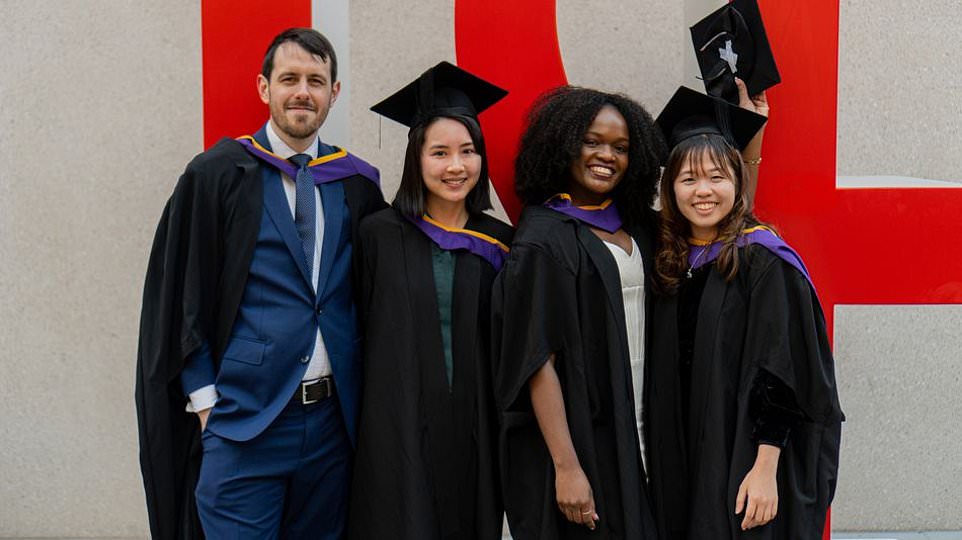
Overview
There are now almost 15 applications for every place at the London School of Economics and Political Science (LSE), after a year which saw the second-highest rate of applications on record but 270 fewer students admitted. Most of the impact of that drop was felt by UK students – an indication not just of the present funding crisis in higher education (universities earn far more money from overseas students) but also of the global marketplace in which LSE recruits. A place at LSE is coveted the world over, such is its pre-eminence in politics, economics, business and the social sciences. Students come from a wider range of backgrounds than in most elite Russell Group universities – the product of a consistent mission to widen access to its courses. One third of offers made to UK students last year were discounted contextual offers taking account of social or educational disadvantage. With just over 40 undergraduate degree programmes, LSE offers a tight portfolio of subjects. Situated in central London, and close to the theatres, museums and retail distractions, students have plenty to do when they are not studying hard. Graduates are well paid and hugely in demand.
5. University College London
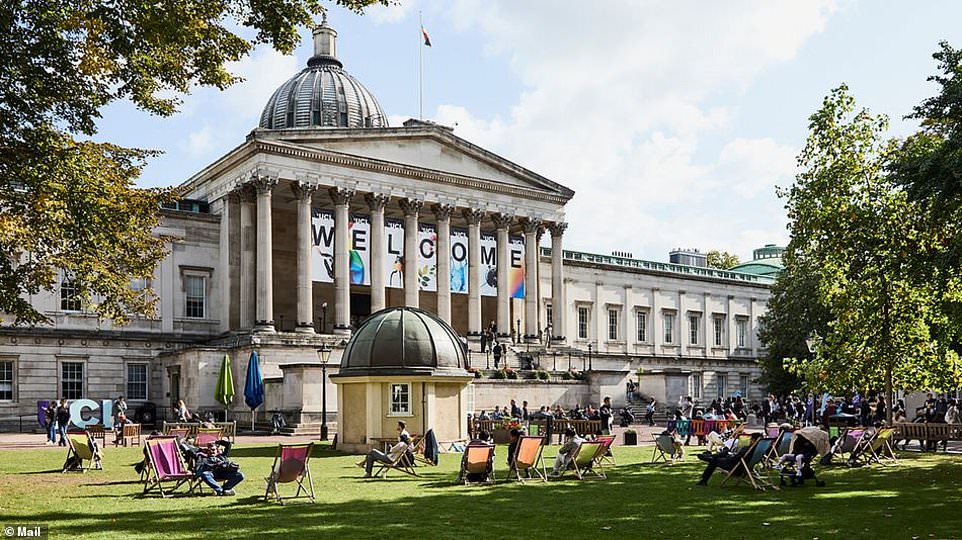
Overview
Now fully open, UCL East gives University College London a second home to go alongside its long-standing base in Bloomsbury, central London. Located within the Queen Elizabeth Olympic Park, UCL East is part of the trendy East Bank cultural and educational legacy of London 2012. With 54% of admissions last year drawn from abroad, no other university recruits undergraduates from overseas on a larger scale. UCL was founded in 1826 and, as it approaches its bicentenary, it remains true to its founding principle of equality in all things, providing £11.7m in financial support to around 30% of the intake last year, while around one in six gained a place via a contextual offer. There is academic strength across all disciplines and its free-thinking graduates are in demand – the latest High Fliers report found UCL was targeted by more top employers than any other London university. That legendary free-thinking will be in evidence in court in 2026 when around 5,000 current and former students take landmark legal action against the university over Covid and strike-related disruption to their degrees. Many other universities will be watching from behind the sofa.
6. University of Warwick
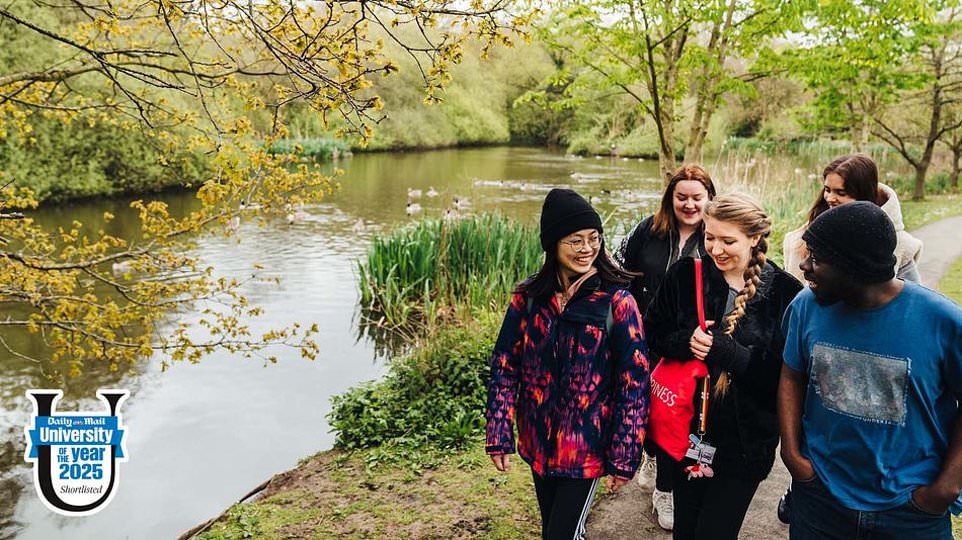
Overview
Shortlisted for our University of the Year title, Warwick turns out graduates who are among the most sought-after; the university sits sixth in this year’s High Fliers ranking of universities targeted by the largest number of leading graduate employers, ahead of both Oxford and Cambridge. The university celebrates its 60th anniversary next year with applications running at record levels – 58% higher than a decade ago – and admissions are at a level beaten only during the pandemic years of inflated grades. The university recruits nationally and globally, and it is one of the institutions that mops up students who miss out on Oxbridge. The spacious campus university sits not in Warwick, but on the outskirts of Coventry. Academic, sporting, social and residential facilities are all close to hand. The Warwick Arts Centre, which has five spaces for theatre and music, three cinemas and a gallery, is one of the biggest outside London. Sporting facilities are excellent, too, and Warwick is a serious player in inter-university competitions. Academic strength spans the arts, humanities and languages, as well as the social sciences, science and engineering. The recent triple gold award from the Teaching Excellence Framework for overall rating, student experience and student outcomes speaks to that broad-based brilliance.
7. University of St Andrews

Overview
St Andrews, our University of the Year for Student Experience, has established itself as an alternative to Oxford and Cambridge over the past two decades, going toe-to-toe with the UK’s two most famous universities. It has topped more domestic university rankings than either Oxford or Cambridge in the past three years, its success built on an unrivalled record for student satisfaction with teaching quality, support and their overall university experience. St Andrews tops our analysis of the student experience scores in this year’s National Student Survey. The university proves that it is possible to meet the high expectations of demanding, well-qualified students, measured in the National Student Survey, when many rivals in the Russell Group come up woefully short. It also has a growing reputation in key areas of research with global impact. Academic excellence spans all four faculties – arts, divinity, medicine and science – leading to fierce competition for places. The attractiveness of St Andrews extends to its location. Perched on a rocky outcrop on the east coast of Fife, St Andrews is a small, pretty town where it is impossible to discern where the town ends and the university begins. Students make up more than half the population. When not studying, you can lower your golf handicap or run along the stunning beach that featured in the iconic movie, Chariots Of Fire.
8. University of Strathclyde

Overview
Strathclyde, winner of our Scottish University of the Year award last year and runner-up to Imperial College London for the UK title, is an outstanding university with a stellar record for graduate employment, particularly in areas where there is a national shortage of able graduates. It is an engineering powerhouse and one of the UK’s leading technological universities. It is also socially progressive, admitting by both headcount and proportion more students from the 20% of Scottish postcodes considered to be the most deprived than at any other highly selective university in Scotland. More than 225 years after its establishment, it remains the ‘place of useful learning’ envisaged by its posthumous founder, John Anderson. Across all four faculties – engineering, humanities and social sciences, science and the Strathclyde Business School – industry and business routinely have input on course structure and programme delivery, with many of those companies offering placements to students. The university’s commitment to preparing students for the world of work extends to embracing apprenticeships. A total of 650 learners are engaged in six graduate apprenticeship programmes in Scotland, working with 200 employers, and a further 100 learners are enrolled on five degree apprenticeships, working with 46 employers based in England.
9. University of Bath

Overview
Founded in the 1960s, Bath’s modern hillside campus sits above the Georgian city, and is renowned for science, engineering, business and its outstanding sports facilities. Team Bath is one of the big hitters in the university sports leagues and home to many national and international-standard athletes, who can combine their studies with top-class training. The university saw a record number of applications and admissions in 2023, with 4,750 students enrolling through Ucas – an almost 7% rise on the year before. Bath is hugely popular with graduate employers, too, and our University of the Year for Graduate Jobs award last year acknowledged this. Graduates command some of the highest starting salaries of any university. Bath works hard to integrate students from all walks of life. The 50 annual recipients of the Gold scholarship, who come from under-represented and low-income backgrounds, have the option of receiving mentoring, training in personal development, networking and skills, and support with securing placements and internships. They also take part in 50 hours of volunteering, fundraising or outreach work.
10= University of Dundee
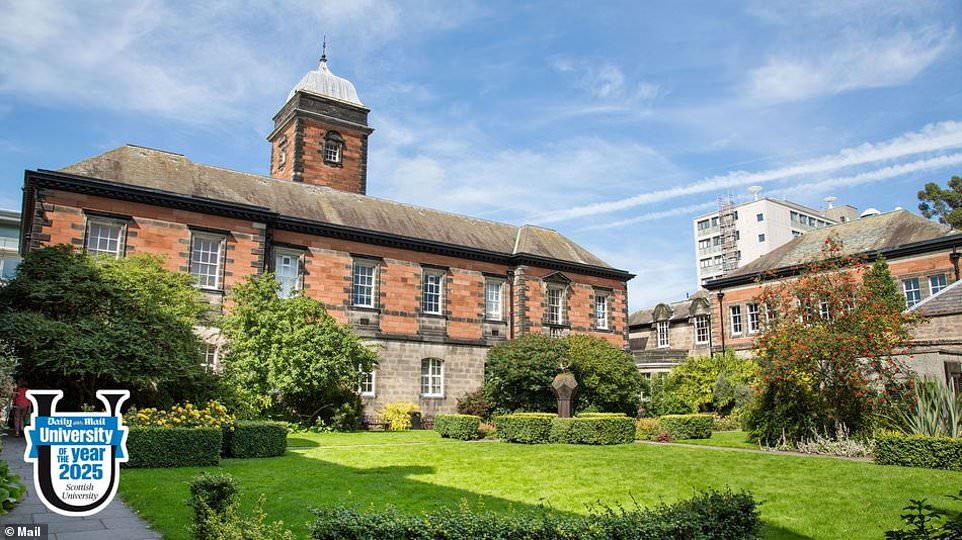
Overview
Dundee is one of the powerhouses of Scottish higher education and our Scottish University of the Year. It is now one of three Scottish universities to be ranked in our UK top 10. The university has a formidable reputation in medicine, biomedicine and the life sciences and plays a key role in the economy of its home city and turns out high-calibre graduates ready to make an impact. It is estimated that the university supports one in 12 jobs in the wider city. Occupying a central campus in Dundee, the university has further outposts at Ninewells Hospital (the medical school) and Kirkcaldy, 30 miles away in Fife, which is home to some of its nursing and midwifery provision. Scores in this year’s National Student Survey have recovered after a few lean years, with students scoring teaching quality particularly highly. However, applications fell by more than 10% for admission in September 2023. Against this background, the university created an education academy last year to put delivering an outstanding education and student experience front and centre. Among its objectives are carrying out a review of student services, further embedding employability and enterprise in degree programmes, and developing Dundee’s digital campus.
10= University of Sheffield
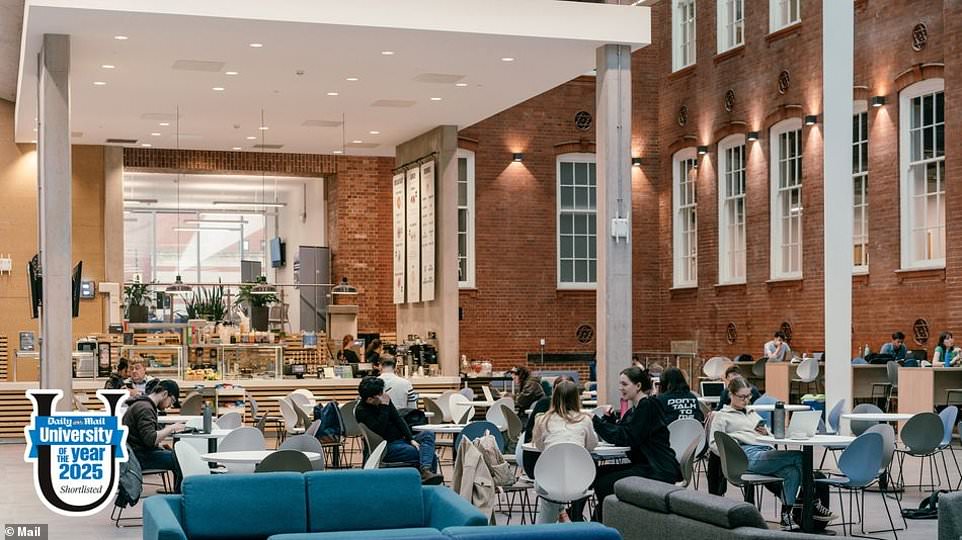
Overview
Shortlisted for our University of the Year award this year and once again the top-ranked university in northern England, Sheffield has seen record numbers of applications for four successive years. Further evidence of its calibre and popularity was provided by this year’s Whatuni Student Choice Awards, which saw it crowned University of the Year and voted best for student life by its own students. It was named as our University of the Year for Student Experience this time last year, based on its excellent results in the National Student Survey. A growing contextual offers scheme cuts two or three grades from the standard offer for most courses for students from under-represented groups, bringing the university within reach for a more diverse student population than you find at most other Russell Group universities. The university is a melting pot, recruiting from across the UK, and one in five undergraduates are recruited from overseas. Students are attracted not just by the university’s fine reputation and facilities; they also love the city and the surrounding area, and many choose to settle here after graduating. Sheffield has all-round academic strength, but its engineering, materials science and medicine courses are especially highly regarded. Students can draw on the university’s careers and employability support services for as long as they need after graduating.
St George’s, University of London

Overview
From August 1, the UK’s only specialist medicine and healthcare university became one half of the new City St George’s, University of London ‘health powerhouse’ following a merger with City, University of London. The new institution wins our University of the Year for Graduate Jobs award, based on its previous success in student outcomes across medicine, healthcare and the professions. It is also runner-up for UK University of the Year, in part for the potential that the union offers. The merger brings together two institutions with a significant and complementary presence in medicine and healthcare, while at the same time adding City’s general education of professionals into the mix. It creates a university that spans both multiple disciplines and the capital itself, which is expected to prove a significant draw to applicants going forward. It hopes to bring its critical mass to bear on tackling the policy, treatment and research issues facing the NHS. Based in Tooting, south London, St George’s is best known for medical training, but for many years it has also offered an extensive range of health-related courses, encompassing biomedical science, clinical pharmacology, diagnostic radiography, healthcare science, occupational therapy, paramedic science, physiotherapy, and radiotherapy and oncology. St George’s attracts a diverse intake, with more than two-thirds of those admitted drawn from ethnic minorities and around one-third are mature returners to education.
King’s College London

Overview
King’s is investing £45.5m in hiring new staff, creating new interdisciplinary research centres and building new infrastructure to expand its science education offering and leverage the university’s breadth of expertise across the arts, law, technology and engineering. The aim is to enhance teaching and drive research breakthroughs. King’s is one of the UK academic powerhouses, with excellence across all disciplines and one of the largest concentrations of medical and healthcare provision at any university, encompassing three of London’s largest teaching hospitals in Guy’s, St Thomas’s and King’s College Hospital. The number of applications in the past two years is higher than at any time in the long history of the university. Just under 7,000 undergraduates were admitted last year as competition for places moved above 10:1, with more than 40% of them recruited from overseas. However, the university works hard to remain accessible to all. It has one of the best records for social inclusion of any Russell Group institution, with a shade under 40% of all students being the first in their immediate family to go to university.
Loughborough University

Overview
There are brains to go with the brawn at Loughborough, our Sports University of the Year. Famed for its sporting prowess, the university is also one of the country’s academic powerhouses, exemplified by the recent success of alumnus Charlie Dobson, the Team GB athlete who took silver in the 400m at the European Athletics Championships in Rome in June. He graduated with a first class degree in aeronautical engineering in 2023. Loughborough-connected Olympians went on to achieve 16 medals in Paris this summer (four gold, four silver and eight bronze) which would have ranked the university 16th in the global medal table, ahead of countries like Sweden, Kenya and Ireland. Loughborough has the best university sports facilities this side of the Atlantic. They’re so good that several sports – athletics, swimming, triathlon, cricket, weightlifting and netball – have their national headquarters onsite. Its students have won the inter-university British Universities and Colleges Sport (Bucs) title for 43 consecutive years. But the university also sits in or just outside the top 10 in all the major domestic rankings for academia, too. It tops the QS world ranking for sports-related subjects, and its design school is one of the best in the UK. For many years, Loughborough has aced the National Student Survey, the results confirming that its students love life on its 523-acre campus. When they leave, they are hugely in demand, earning some of the highest graduate salaries anywhere.
University of Birmingham
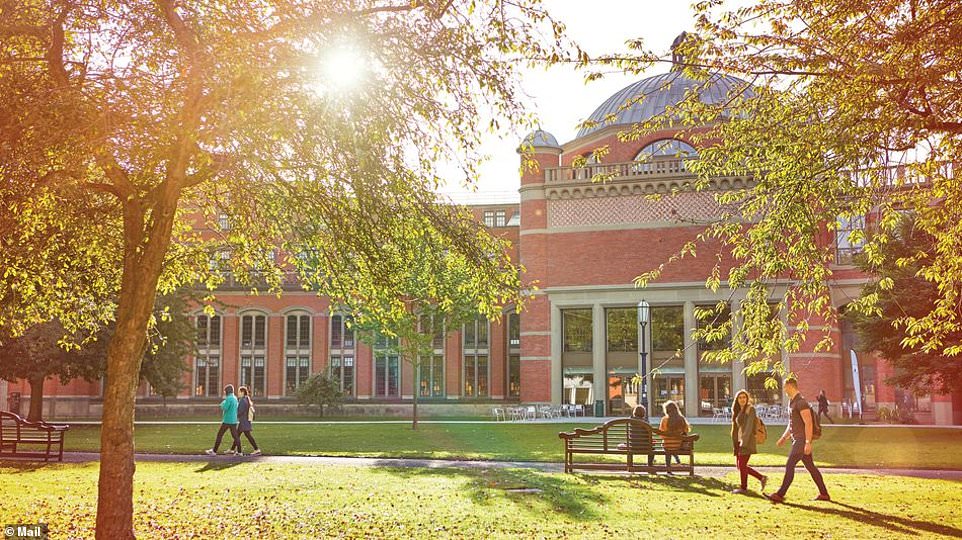
Overview
Birmingham is one of the biggest and most popular universities in the country. That doesn’t make it impersonal, however. Unlike some other universities on this scale, Birmingham seeks to make offer holders feel part of the university from the outset. This year, to boost the number of firm acceptances of places, it reduced its asking rate across all subjects by one A-level grade to offer-holders. The strategy seems to be working, with last year’s 7,040 admissions through Ucas beaten only in the grade-inflated pandemic years. Competition to get an offer is stiff, though, with eight applications for every place. One of the original redbrick universities – so called because of the materials used in the principal buildings which date from the early 20th century- the university is located in the affluent suburb of Edgbaston, a seven-minute train ride from the city centre. The campus has been heavily invested in recently, too. It is a member of the Russell Group of leading, research-intensive universities, and sits behind only Manchester and Nottingham in the latest High Fliers research into the universities most targeted by top employers.
Durham University

Overview
Durham is the darling of the independent school sector, taking comfortably the highest proportion of privately educated students of any British university. But it is working hard to dispel its elitist image, offering some of the most generous bursaries and scholarships, and steadily widening participation. ‘The Durham difference’ is not just an old marketing handle for the university, but a reflection of its unique constitution. It is collegiate like Oxford and Cambridge, but the 16 undergraduate colleges are essentially social groupings rather than academic ones. Colleges are split between the Bailey (the older ones in the streets around the cathedral and castle) and the Hill (just to the south of the city centre, where the newer colleges have sprouted up). Durham Castle itself is home to University College, the oldest college, which is the most popular with applicants. This is closely followed by Collingwood, a Hill college that has benefited from significant philanthropic investment in its social and sports facilities. Durham’s all-round academic strengths span the arts, sciences and social sciences.
Queen Mary University of London
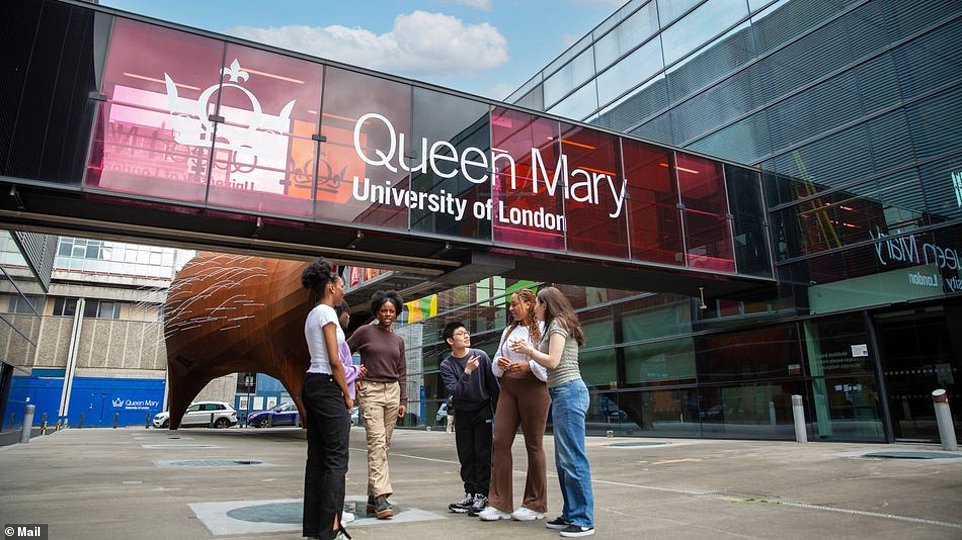
Overview
Queen Mary is the most socially inclusive of the research-intensive Russell Group universities by some distance. It recruits heavily from within London (more than 70% of last year’s UK undergraduate intake) where participation in higher education is the highest, and yet manages to attract almost half of its students from homes where neither parent attended university. Two thirds of the intake were from Asian, black or mixed-race families and just 7.5% were educated privately. The financial aid offered is significant in both sum and reach, the university has a strong mental health and wellbeing support structure, and it offers mentoring from current students and alumni – all in acknowledgement of the additional challenges many students might face coming from groups traditionally under-represented on campus. Applications were the second highest on record in 2023. The main Mile End campus lies in a trendy part of the capital with an excellent social scene, and there are top-notch sporting facilities onsite and in the nearby Queen Elizabeth Olympic Park. The well-regarded medical and dentistry school is a short distance away near the Royal London Hospital in Whitechapel, with a second outpost in West Smithfield at Barts hospital.
University of Bristol

Overview
Bristol is doing its bit to tear down barriers that have prevented disadvantaged children from attending elite universities. It was one of the first universities to embrace contextual offers – one quarter of Bristol’s entrants held one last year – and it is extending its bursary scheme to include all students from homes with less than £50,000 income. It is a member of the Russell Group of research-led universities, which are among the hardest to get into. Not that this puts anyone off. Applications hit a record high last year at more than 61,000, while just under 7,000 students were admitted. The university recruits almost half of its UK students from London and the south-east, who are drawn by its excellent reputation and good links to the rest of the UK. The university has centres of excellence across the arts and sciences, with chemistry of particular note and artificial intelligence an increasingly influential area of activity. The latest High Fliers survey found that Bristol was the fifth most targeted university among leading graduate employers, too.
University of Surrey

Overview
Surrey has upped its game in the past decade to become one of the leading 1960s universities. It now has the rare distinction of having both a veterinary school – opened in 2015, and one of only 11 in the country – and a new medical school. These jewels follow in the footsteps of other, older gems such as the Surrey Space Centre, which was founded in 1979. It has since become a leading global centre of excellence for space engineering and one of the pioneers of small satellite technology. The university is located on two campuses – Stag Hill and Manor Park – a short distance from the centre of Guildford. Despite its leafy, stockbroker-belt location, the university offers the cheapest student accommodation in the country, with more than 200 rooms at just £3,002 for a 38-week let. This is of huge benefit to a surprisingly diverse student population; four in 10 of last year’s intake are the first in their immediate family to go to university. An outstanding graduate jobs record, which sees around 82% of students land high-skilled jobs on well-above-average salaries, is fostered by a flourishing placement programme with more than 2,300 national and international partners.
University of Southampton
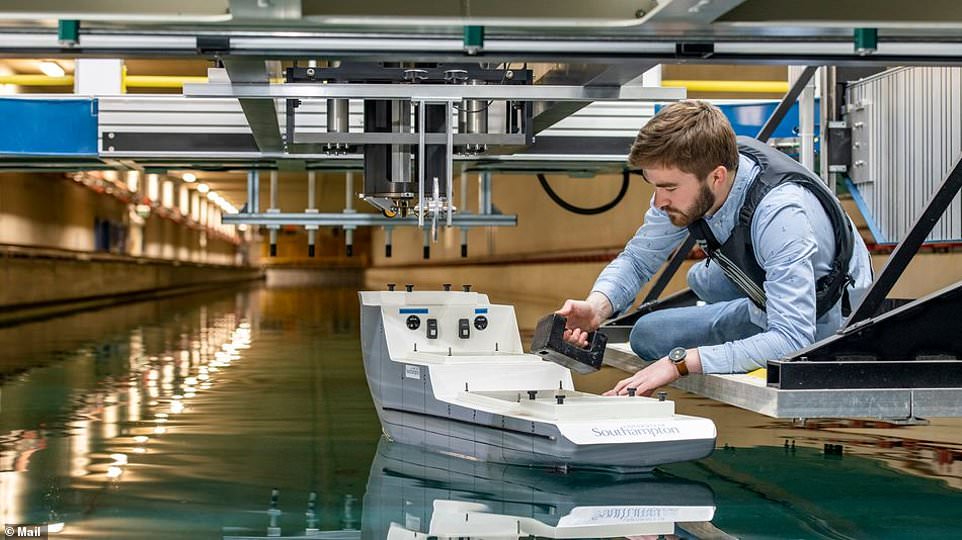
Overview
Applications for this research-intensive Russell Group university crested 45,000 for the first time last year. It works hard to make courses with mostly high entry requirements available to a wider audience, with a contextual offer scheme reducing the standard ask by up to two grades across all courses. Assessors for last year’s Teaching Excellence Framework (TEF) praised the university’s Ignite Your Success programme as ‘outstanding’. The scheme provides academic and career opportunities and financial support for students from under-represented groups. The wider TEF result of three silver awards for overall rating, student experience and student outcomes was somewhat less than the university would have hoped for. It is based on several sites across Southampton, with the main Highfield campus being the most attractive. The university is a true academic all-rounder, but the National Oceanography Centre on its Waterfront campus is a notable gem. It is home to the school of ocean and earth science, which has a coral reef laboratory for testing environmental effects on reefs in a controlled setting, as well as a research vessel. Southampton’s reach extends into nearby Winchester, which is home to the university’s art school.
University of Glasgow

Overview
Glasgow is the most Scottish of the big three universities in Scotland, with four in every five UK students recruited from north of the border, much more than at Edinburgh and St Andrews. But just under one quarter of last year’s intake were international students, drawn by Glasgow’s global excellence as a research-intensive Russell Group university with a history going back nearly 600 years. While some of the university’s civic architecture betrays its long history, it is getting more modern by the year thanks to a £1bn decade-long investment programme. This month’s intake of students should be the first to use the new Clarice Pears Building, which brings the School of Health & Wellbeing together on one site. The main Gilmorehill campus is in Glasgow’s fashionable West End, but there is a further campus at Garscube, about four miles away, which is home to outdoor sports facilities, veterinary medicine students and the catered Wolfson Hall student accommodation. In Dumfries, the university teaches social and environmental sustainability, as well as its primary education with teaching qualification.
University of Aberdeen
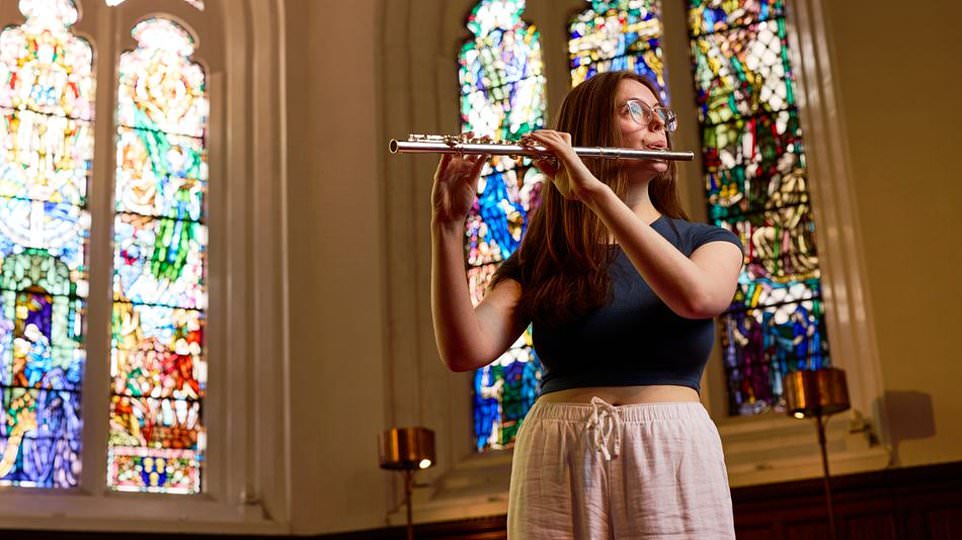
Overview
Britain’s most northerly university is among the most prestigious. Founded as King’s College in 1495, it mixes historic, creeper-clad buildings at the heart of the old city with striking, modern facilities elsewhere. Students are based on one of two central campuses – the modern Foresterhill for life sciences and medicine, and Old Aberdeen for arts, social sciences and physical sciences. Aberdeen’s excellent air and rail connections ensure a strong national and international student presence, with more than 130 nationalities represented, despite the university’s relative remoteness. Applications have been falling in recent times, however, with 16,525 seeking places through Ucas for admission last September – the lowest number in the past decade and 10% down on the year before. There are more than 400 degree options, including courses that serve the Scottish economy, such as mechanical engineering with oil and gas studies, and more unusual combinations, such as law with options in music. One in 10 students are eligible for contextual reduced grades offers under widening access criteria.
Queen’s University, Belfast

Overview
Queen’s University Belfast is enjoying record popularity. A whisker under 30,000 applications were made for courses beginning in September 2023 – a new high – and the near-5,000 enrolments was also a record outside of the pandemic years when admissions were distorted by teacher-assessed grades. The student population is far more diverse now than during The Troubles. Last year, 13% of the intake came from overseas, and of the home recruits, 10% now come from beyond Belfast Lough. Hillary Clinton has been chancellor since 2020, a symbol of the international mindset that now pervades the university. Queen’s is a member of the Russell Group of research-intensive universities and commands top grades from an intake educated predominantly in Northern Ireland’s selective grammar schools. However, there is good social diversity on campus, with 30% of students qualifying for means-tested financial support. Academic excellence spans medicine and healthcare, science, computing and engineering, the social sciences, humanities and the arts. The attractive university district lies in the south of Belfast, close to the city’s Botanic Gardens and a host of university-run venues open to the public, including a theatre, gallery and an art-house cinema. The thriving city centre is a short bus ride away.
Aston University

Overview
Aston, which has been a university since 1966, achieves the rare feat of being socially inclusive in its intake, while having a high completion rate and achieving well in the graduate jobs market. It is our University of the Year for Student Success in recognition of this. Making its debut this year after opting out of our inaugural guide last year, it performs strongly in our ranking, which is the only one to measure social inclusion alongside teaching, research and graduate outcomes. Last year it secured triple gold in the Teaching Excellence Framework covering student experience, graduate outcomes and an overall rating, and a near 14% increase in enrolments took recruitment to a new high. More than half the students are the first in their immediate family to go to university and 82% are from ethnic minorities. After Aston secured second place in a recent social mobility ranking of English universities, Professor Aleks Subic, Aston’s vice-chancellor, said: ‘We have proved that it is possible to be an inclusive university that delivers impressive graduate outcomes, regardless of a student’s starting point or social capital.’ It’s hard to disagree.
University of Leeds
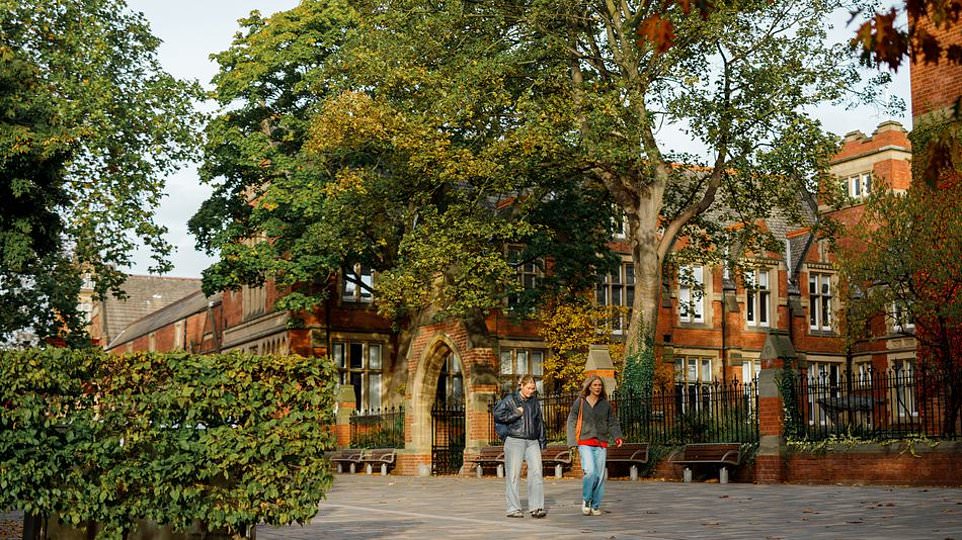
Overview
Despite recent poor results in the National Student Survey, Leeds remains one of the most popular universities in the country, fielding nearly 70,000 applications last year. It occupies a 100-acre campus a short walk from the city centre. The university’s green spaces and modern buildings are interwoven with Victorian grandeur and 1960s brutalism, giving the campus a definite charm. Leeds has shifted back to a focus on face-to-face learning post-pandemic, and its careers service has a great record of supporting students from under-represented backgrounds. Performance is strong when it comes to students achieving good degree classifications and alumni going on to secure high-skilled jobs, all while the university consciously focuses on its renowned Access to Leeds initiative to widen participation. Of last year’s intake, around 25% of students received a contextual offer – many courtesy of this scheme. Leeds has a range of both catered and non-catered rooms available and guarantees an offer of accommodation to all first-year students.
University of Liverpool

Overview
Liverpool aims to be a world top 100 university in time for its 150th anniversary in 2031. It will achieve this, in part at least, by improving levels of student satisfaction, securing even better graduate outcomes, increasing research income and hitting sustainability targets. It is a member of the Russell Group of research-intensive universities and has better levels of social diversity on campus than many others in the group. It occupies a city centre site and, with Liverpool John Moores University next door, a large district of central Liverpool is effectively a glorified university precinct. The popular medical school within the Royal Liverpool University Hospital borders one side of this district. Dentistry, veterinary medicine, nursing, architecture and engineering are among the subject areas for which the university is best known. Applications hit a record for the second successive year in 2023 and the total of 6,500 admissions has been topped only once. The university recruits across the UK, with London, the South East, West Midlands and Yorkshire each contributing between 500 and 600 undergraduates. Just over one third of the intake comes from the North West.
City, University of London

Overview
City St George’s, University of London officially came into being on August 1, bringing together two previously separate members of the University of London federation – City and St George’s. The now-united university is our University of the Year for Graduate Jobs and is runner-up for the overall University of the Year award. It has asked to be listed separately in this edition of our guide, however, as City and St George’s will continue to handle admissions separately for the upcoming September 2025 recruitment cycle. It is in the field of healthcare that the two institutions have considerable shared and complementary experience, but the provision that made the now former City University distinctive will remain in the merged organisation. City has long positioned itself as the university of business, practice and the professions – a marketing handle based around its 200 career-focused degree options, from business management and law to media and communications. Four in five students progress into highly skilled jobs, putting City among the top performers. The merger with St George’s comes as City surfs a wave of popularity, with applications last year topping 30,000 for the first time.
University of Manchester

Overview
The popularity of the University of Manchester continues to grow with each passing year. Applications hit a new record (93,450) for admission in September 2023 and are now running 44% higher than they were just six years ago. With nearly 10,000 undergraduates gaining places each year, and more than 45,000 students overall, this is higher education on a vast scale. The recent introduction of 12 student support hubs is an attempt to put a human face on the academic machine. ‘Our students asked us to… provide clearer, consolidated and more consistent student support services delivered by trained specialists,’ the university told us. This might go some way towards addressing the consistently poor student satisfaction scores registered in the National Student Survey. Those scores have had no impact on the university’s popularity with applicants, however. They focus more on the formidable academic reputation of this Russell Group university and the lure of the city of Manchester itself, famed for its nightlife, cultural attractions and the sheer volume of students. The campuses of the University of Manchester, Manchester Metropolitan University and the University of Salford adjoin one other, creating a central student district of more than 100,000 students.
University of East Anglia
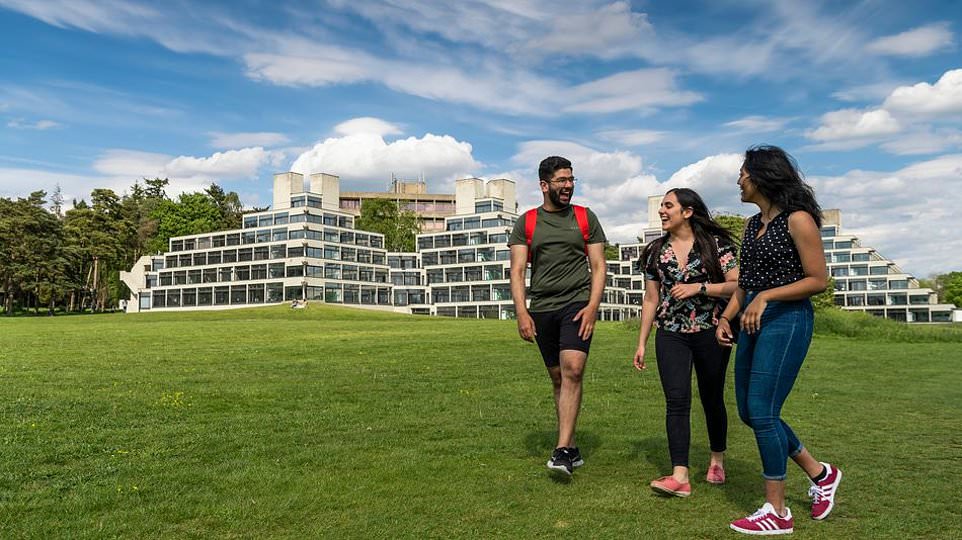
Overview
The University of East Anglia (UEA) is one of the leading lights among the 1960s generation of universities, with a national and international reputation for everything from creative writing to climate change degrees. It has just celebrated its 60th birthday under something of a cloud, labouring under a £74m deficit to July 2022. However, a new year of accounts shows a small surplus after a big cut in staff costs, and the university is building for the future with this year’s launch of 42 courses with a placement year, year abroad or foundation year added to broaden their appeal, with another 33 programmes rostered for September 2025. The university recruits almost 90% of its socially mixed student population from East Anglia, London and the South East to its parkland campus on the outskirts of Norwich. It’s spacious and dotted with listed buildings, including the iconic Lasdun Wall, and is also home to the Norman Foster- designed Sainsbury Centre, which houses one of the best art collections in the country. UEA’s Sportspark provides outstanding facilities for athletes of all abilities.
University of Edinburgh
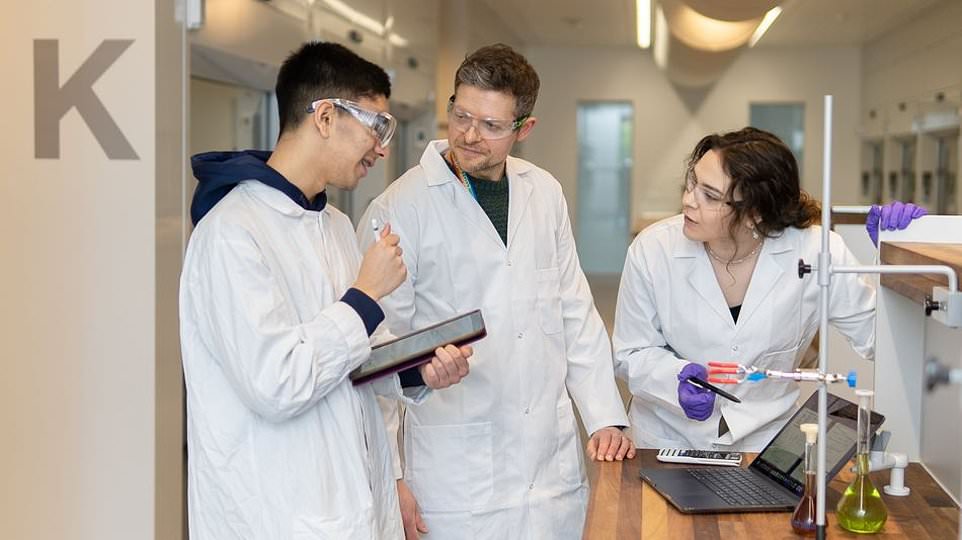
Overview
Edinburgh is one of the destinations in British higher education, with only the University of Manchester attracting more applications. You will need sharp elbows to win a place, with every seat in the lecture theatre coveted by more than 10 prospective students. Its appeal is global, with international students making up one third of undergraduate admissions last year. The combination of a cosmopolitan student body, a stylish city playground and a reputation for teaching and research excellence is a winning formula. Only the consistently poor results in the annual National Student Survey stop the university from ranking in our UK top 10. International rankings, such as the 2025 edition from QS, place Edinburgh 27th in the world (two places higher than we do) on pretty much academic measures alone. And it is not hard to see why. Academics at Edinburgh are constantly rolling back the boundaries of knowledge. Remember Dolly the Sheep? Think also the supercomputer Archer2, which lives here. The university was identified as the preferred location for the UK’s first next-generation exascale supercomputer, which would have been one of just a handful in the world and 50 times faster than any of our existing machines, but the project was cancelled by the new government in Westminster due to lack of cash.
University of Leicester

Overview
Leicester, our University of the Year, makes a strong case to be the model university for the 21st century. Strong in teaching. Strong in research. Strong in social inclusion. Three of the key components of our innovative ranking. But don’t just take our word for it. The official assessment of teaching quality provided by the Teaching Excellence Framework saw Leicester achieve an overall gold rating last December. And the most recent official assessment of research quality, the Research Excellence Framework, published in 2021, ranked Leicester 29th in the UK in our analysis of the outcomes. The university reflects Leicester itself, which is one of the most socially and ethnically diverse cities in the UK. Asian, black and white students are in almost equal balance on campus, making up 32.4%, 26.2% and 31.3% of admissions respectively in September 2023. Appropriate support structures have been put in place to ensure that all students – and particularly those from under-represented backgrounds – succeed. Applications and admissions are at a record high. The secret is out: Leicester is one of the best catches of the British higher education system – a top-flight university, respected by employers, which makes reasonable offers within the reach of most students.
Heriot-Watt University

Overview
Heriot-Watt University (HWU) specialises in degrees in science, engineering, technology, business and design – and has a first-rate record for its graduates securing well-paid, high-skilled jobs once they leave. It is one of the UK’s top performers in our graduate jobs metrics and other surveys are similarly complimentary. An analysis of UK universities conducted last year by Novuna showed Heriot-Watt had the highest proportion of graduates of any Scottish university in chief executive or managing director roles. The university began life more than 200 years ago as a mechanics’ institute, so the accent here has always been on real-world, careers-focused education. The decision to make its Riccarton campus the home of the new National Robotarium, a partnership with the University of Edinburgh which will explore the practical applications of robotics on everyday life, is no coincidence. Around one in six UK students is recruited from outside Scotland – a more mixed UK recruitment pattern than at many Scottish institutions. Most are based at the main Riccarton campus on the western edge of Edinburgh. There are smaller outposts in Galashiels, where fashion, textiles and design courses are based, and Orkney, home to three postgraduate MScs in marine science and renewable energy, as well as the International Centre for Island Technology.
University of Nottingham

Overview
Nottingham is a member of the prestigious Russell Group, has a highly respected medical school and strength right across the academic disciplines, and has built a formidable name for itself on university sports pitches. It recruits from across the UK and competition for places is fierce. In light of the university’s stiff entry requirements, the student population is notably mixed, with good representation from ethnic minorities (around one third of last year’s intake) and non-selective state schools (around two thirds). Centred on University Park, a 300-acre green lung at the heart of Nottingham, it has impressive facilities in a mixture of period and modern buildings. A short distance away, the Jubilee campus is home to the business school, the schools of education and computer science, and the Nottingham Innovation Park. Following the murder last year of Barney Webber and Grace O’Malley-Kumar, two first-year students who were stabbed while on their way home from an end-of-term party, work was completed earlier this year on a memorial woodland walk on the University Park campus to commemorate all students who have lost their lives.
Cardiff University

Overview
Cardiff is enjoying a ‘moment’. Applications hit a new high in September 2023, and admissions soared to a level surpassed only during the pandemic when numbers were skewed by the increase in top A-level results. Just under 8,000 students gained a place, up from around 6,000 a decade ago. Cardiff is the biggest university in Wales and the only one to be a member of the elite Russell Group. It prides itself on being among the more socially inclusive in that group; one third of entrants are the first in their immediate family to go to university, and four in five students were educated at non-selective state schools. The university occupies two campuses: Cathays Park in the city centre, and the more modern Heath Park a mile away, which is home to healthcare-related courses and the University Hospital of Wales, where the medical school is located. With three universities in the Welsh capital, there is no shortage of student nightlife and discounts. Cardiff ranked second in last year’s NatWest Student Living Index, a guide to the most affordable UK cities for students.
University of Exeter

Overview
Being named Higher Education Institution of the Year in 2023 by the National Education Opportunities Network for its work in widening access to university confounds the traditional green wellies and VW Golf GTi image of Exeter students in popular culture. In fact, almost one in four students entered the university last September holding a contextual offer, which undercuts standard offers by two or three A-level grades in recognition of disadvantage. Places on some of the university’s most popular programmes are ring-fenced for students who meet its widening participation criteria. There are also 3,000 degree apprentices, who split their time between paid work and study, more than at any other Russell Group university. Privately educated students make up just under 30% of the intake, and Exeter has undoubtedly attracted a chunk of those students who have been displaced by the recent change in admissions policies at Oxbridge. The main Streatham campus in Exeter – one of the UK’s most beautiful – is home to the majority of students. There are smaller outposts at nearby St Luke’s, which is home to its medical school, and at Penryn in Cornwall, on a campus shared with Falmouth University.
University of York

Overview
York wears its commitment to social justice on its sleeve. It was the first Russell Group university to sign the Social Mobility Pledge and, while competition for places is tough, a contextual admissions programme open only to state-educated applicants helps generate a more diverse student population than in many universities of a similar standing. York may have just celebrated its 60th birthday, but it has a spring in its step courtesy of three successive years of record applications. Students are drawn pretty evenly from across the UK, and one in eight undergraduates was recruited from overseas last year. Unlike many of its 1960s peers, everything at York is low-rise across two campuses on the outskirts of the city. The university is organised into 11 colleges, which are social and residential groupings rather than academic ones. These help break the institution into bite-sized student communities, while creating tribal loyalties. Recent gold award assessments under the Teaching Excellence Framework for student experience, student outcomes and the overall rating made rather better reading than this year’s National Student Survey outcomes, which once again hold York back in our ranking.
Lancaster University
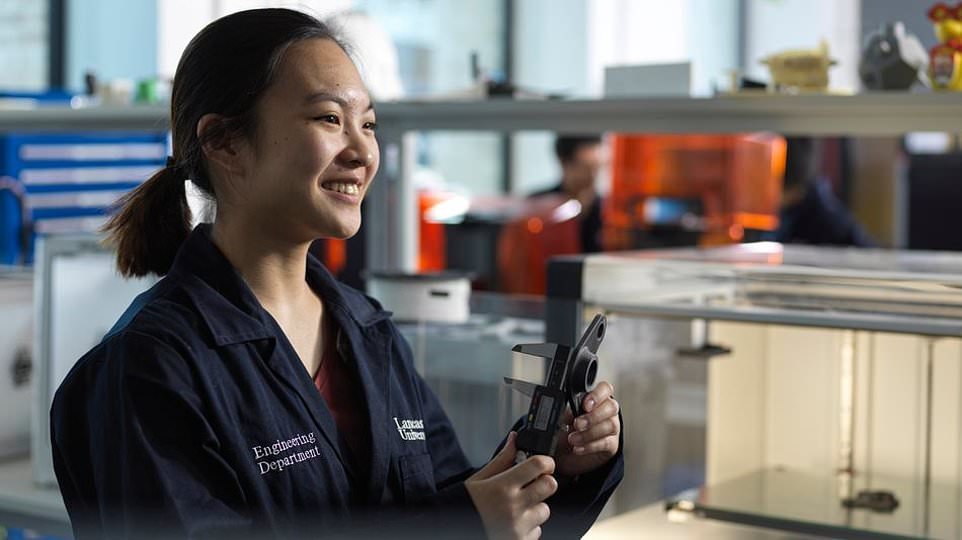
Overview
Lancaster sits on a modern campus on the edge of this pretty city. It is one of the leading lights among the 1960s generation of universities and has built a supportive, cohesive student environment around a collegiate structure. Barely 3% of first-years fail to progress on to year two of their degrees. High levels of student satisfaction are fostered within the eight undergraduate colleges (and one other for postgraduates), which are social rather than academic groupings. Lancaster recruits on a national and international stage, its students drawn by its all-round excellence. Subject strengths range from medicine, engineering and the sciences through to social work, English, drama and creative writing. The Lancaster University Management School is also highly rated. The university is investing heavily to boost its already outstanding reputation in cybersecurity, recruiting 33 academics and 15 professors in practice roles as part of the £19m Security and Protection Science initiative. The Bailrigg campus provides a lively arts and social scene, and there are high levels of participation in sport. When it all gets too much, the Lake District is on the doorstep for wandering lonely as a cloud.
Swansea University

Overview
Swansea’s seafront location, together with its excellent academic pedigree, are key selling points for applicants – with the former so good that the university uses it in advertisements on the sides of London buses. The university’s Singleton Park campus has been joined in recent years by the Bay campus, and both front onto the beach at Swansea Bay. It attracts a UK-wide clientele, with fewer than half of last year’s home intake recruited from Wales. There is a strong international contingent here, too. The university is organised into three faculties – humanities and social sciences; medicine, health and life science; and science and engineering – and has a broad portfolio of courses that includes a graduate-entry medicine degree. Strength in engineering and medicine is balanced by success in the arts and culture. All UK applicants whose predicted grades fall within the offer range for a given course (with the exception of medicine, healthcare and social work) are guaranteed a conditional offer. Outstanding sports facilities, which are a further draw for those with brawn to go alongside brains, sustain a consistently high ranking in the British Universities and Colleges Sport (Bucs) inter-university rankings.
Ulster University

Overview
Ulster celebrates 40 years as a university this year, forging in that time a strong reputation for widening access to higher education. It defines its commitment to social mobility as working ‘to ensure that personal backgrounds do not determine future prospects’. A shortlisting for our University of the Year award last year recognised this work and the institution’s role in regenerating the multiple towns and cities in which it is based. There are three campuses in Belfast, Coleraine and Londonderry, with the university’s sports village in Jordanstown, seven miles outside Belfast. All have been the subject of heavy investment recently, and more improvements are in the pipeline. The university serves a predominantly Northern Irish student population, who make up 99% of the British intake. Just under half of them are the first in their immediate family to go to university. Recent developments such as Ulster’s hugely expanded presence in Belfast – where it has a campus in the Cathedral Quarter – have helped push applications to a level topped just once before, with almost 34,000 applications for a place last year. Many undergraduate courses have transferred to Belfast from Jordanstown, where planning permission has been granted for a £10m sports facility.
Glasgow Caledonian University

Overview
Glasgow Caledonian University (GCU) is the top-ranked modern university in our league table and our Modern University of the Year. It markets itself as the ‘University for the Common Good’ based on its founding mission to be for ‘the common weal’ – and it achieves its objectives in some style. GCU has consistently pursued policies geared to academic excellence, social justice and producing graduates who have a better record in gaining high-skilled jobs than those from many Russell Group universities. It caters for a predominantly Scottish intake (98.6% of all UK students recruited in 2023), with more than one in five recruited from postcodes among the 20% most deprived in Scotland. GCU is one of the biggest providers of health, social care and life sciences graduates for the NHS, produces more building and surveying graduates than any other university in the UK, and is the only university to offer a full suite of optometry degrees. It is also Scotland’s largest provider of graduate apprenticeships, with more than 700 learners on campus.
Newcastle University
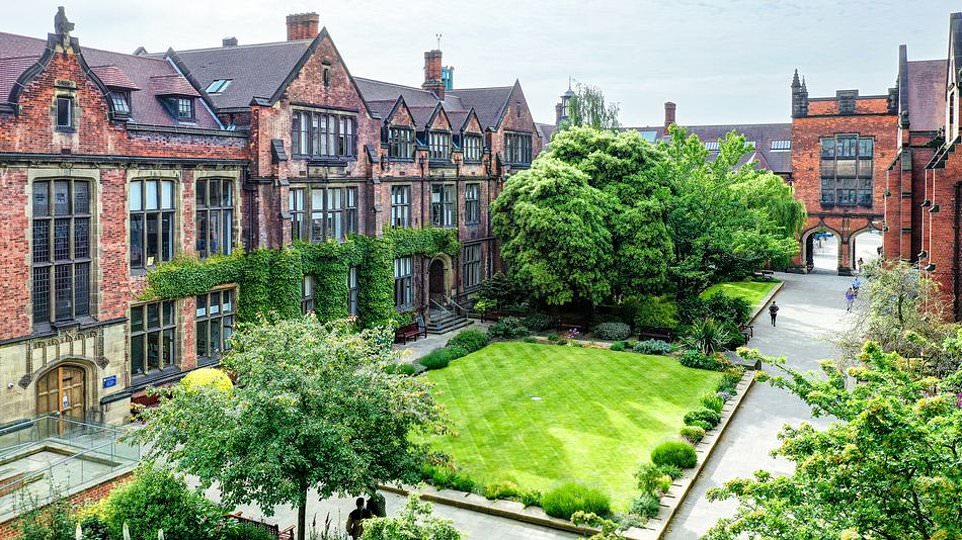
Overview
Newcastle is one of the more popular destinations on the higher education map. The university is a founding member of the Russell Group of research-intensive universities able to attract the most academically gifted students. The university is very popular with the privately educated, who make up more than one in five entrants, and it recruits strongly from across the UK. Students from the North East made up just 22.6% of last year’s intake – not so far ahead of the 17.1% who came from London and the South East. The Royal Victoria Infirmary is home to one of the UK’s leading medical schools with outstanding modern facilities. The university’s Centre for Ageing and Inequalities offers world-class expertise in an area of intense national and global focus as society wrestles with the consequences of increasing longevity. Its position in our ranking – and others like it – is depressed by consistently low scores in the National Student Survey. Even though the university’s graduates are among the best paid, with three in four ending up in high-skilled jobs, they score their experience modestly. And last year’s Teaching Excellence Framework outcomes confirmed that view, awarding student experience a bronze, when student outcomes and the university’s overall rating earned silver.
University of Reading
Overview
Reading is the place to go for all matters green. Already one of the leading centres for meteorology and research into climate change, the university practises what it preaches and is top of the People & Planet rankings for environmental and ethical performance. It has reduced carbon emissions by more than 60% against the baseline and aims to achieve net zero in the next six years. Even the food students eat on campus is made up of sustainable choices and healthy ingredients under the university’s Clever Cuisine scheme. Some of that food is locally sourced from the 2,000 acres of farmland owned by the university, which has an outstanding reputation in agriculture and animal sciences. There were a record number of admissions last September. Just under 5,000 enrolled and applications are close to record levels, too. The university is based largely on the 320-acre Whiteknights campus, which has a lake, woodlands and formal gardens. The London Road and Greenlands campuses are smaller, the latter housing the excellent Henley Business School on the banks of the Thames. A new campus in Malaysia will increasingly offer the option for UK students to study abroad.
Paying the bills
Students who live in a postcode among the 40% with the highest levels of deprivation or the lowest rates of progression to university, and who come from homes with an income of up to £27,000, qualify for the £1,100 annual Reading bursary. There are a small number of scholarships, too. Students gaining AAB at A-level or equivalent who submit an ‘impressive’ application will be considered for a Built Environment undergraduate scholarship worth £1,000 in each year of study across seven construction, building and architecture degrees, while the Lorna Webber Vipond arts scholarship is worth £1,000 per year for one student studying art from an RG (Reading) postcode. Reading is one of five universities to be part of the PwC Flying Start degree programme. Students of the BA in accounting and business can apply for £10,000 in bursary support over four years from PwC if they are state-educated (or privately educated on a bursary or scholarship) and come from homes with less than £35,000 income. Accommodation is competitively priced. The cheapest self-catered rooms cost £6,020 for a 40-week tenancy, rising to £16,829 for a 51-week let. Catered rooms for 40 weeks cost between £6,538 and £10,069.
University of Hull
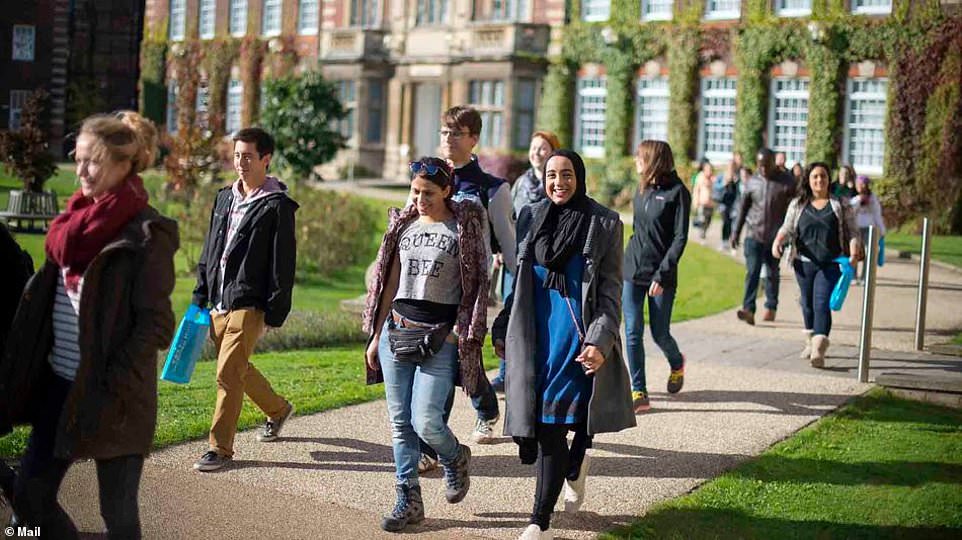
Overview
Hull is on the way back after slipping down domestic rankings and falling in popularity. Applications are climbing once more, with Hull appealing to prospective students thanks to a renewed focus on the student experience, which received a gold rating in last year’s Teaching Excellence Framework assessments. Students have responded with a string of strong scores in recent National Student Surveys. When times are hard, the value for money offered by Hull – which often features at or near the top of lists of the cheapest places to live – is also harder to resist. The student population is not a typical one. Nearly three-quarters of them are recruited from within Yorkshire and the Humber; around one third are mature students aged over 21 when they begin their courses; and more than 55% come from homes where parents or carers did not attend university. Social diversity on campus is fostered by a contextual offer policy that has broad eligibility criteria. Investment in facilities continues apace, with healthcare, sports science and student accommodation the latest to benefit.
University of Essex
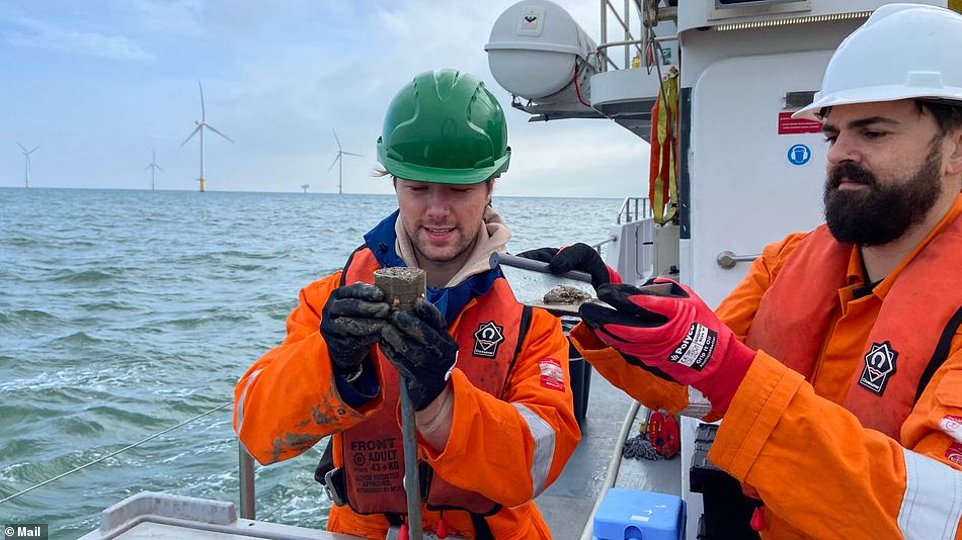
Overview
Sixty years ago next month, a little more than 100 students arrived at a new university near Colchester based in three academic schools: comparative studies, physical sciences and social studies. Most of the Brutalist buildings for which the university is famous were still to be built, but from the outset Essex offered something different to the norm, the ‘radical innovation’ promised by founding vice-chancellor, Sir Albert Sloman. This university in the heart of Essex countryside became an unlikely hotbed of student radicalism in the late 1960s and 1970s, and built an international reputation in politics and the social sciences more broadly. Today, it is home to a large international population of students, who make up about one third of the intake. Home students come predominantly from East Anglia and London. Students are split between three campuses: the mothership near Colchester; a second coastal campus at Southend-on-Sea, specialising in health and social care and business; and a third base in Loughton on the fringes of London and Epping Forest, where the East 15 acting school is based. They all offer a great experience and higher education for eminently achievable grades.
Royal Holloway, University of London

Overview
Situated in the Surrey countryside just beyond the M25, Royal Holloway is the University of London’s country campus. It is a popular combination, with applications and admissions both at record levels last year. Founder’s Building, modelled on a French chateau, is one of the most instantly recognisable university buildings in the world, sitting at the heart of Royal Holloway’s 135-acre campus near Egham. The university serves a largely London and the Home Counties clientele who make up around three-quarters of the UK intake. The university began life as a college for women, and it works hard to maintain that ethos of providing equity in opportunity today. Despite its location in the Surrey stockbroker belt, last year more than a quarter of students benefited from its bursaries, scholarships and hardship support schemes. All students are encouraged to take a placement year during their degree which can be spent studying abroad, working, carrying out voluntary work or boosting employment prospects in other ways. There is a good social scene on campus, and excellent sporting facilities translate into sustained success in inter-university competitions.
Northumbria University

Overview
Northumbria has enjoyed a breakthrough few years, taking on the old-guard universities at their own game. It has established serious research credentials (it was our Research University of the Year in our last edition); a strong employment track record, with around three quarters of graduates landing high-skilled jobs; and an excellent pedigree for social inclusion, with 36% of its intake last year recruited from postcodes among the 40% that send the fewest into higher education. It received a gold for student outcomes in the most recent Teaching Excellence Framework (TEF), alongside slightly disappointing silver ratings for student experience and the overall TEF assessment. It remains a popular choice in its home region, with 57% of the new intake of undergraduates coming from the North East in 2023, and 19% coming from Yorkshire. The university is a key player in the regional economy, providing more graduates into skilled jobs in the region than any other university, including its two local Russell Group rivals, Newcastle and Durham. There are strong ties with local employers in both the public sector (notably the NHS) and private sector (Proctor & Gamble, Nissan), as well as with business and industry more generally.
London South Bank University
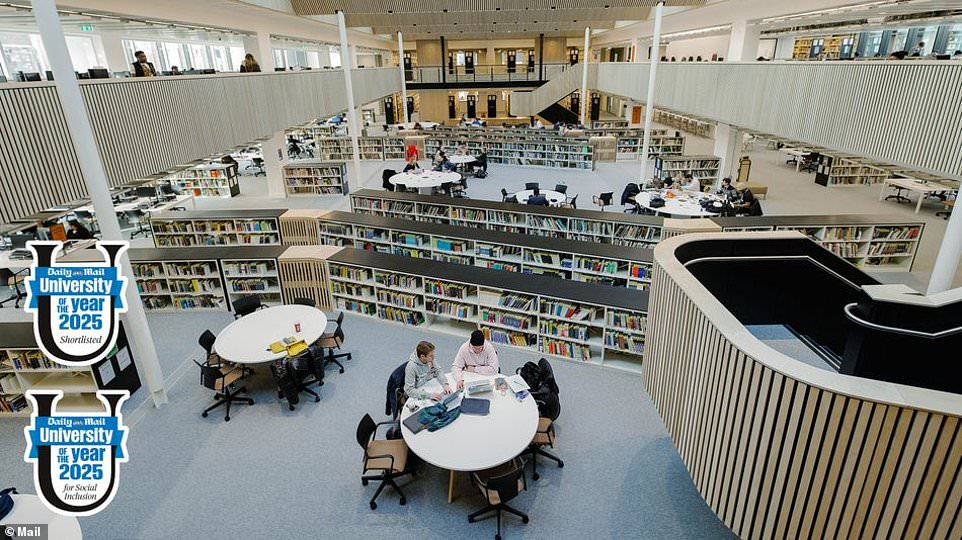
Overview
London South Bank University (LSBU) – our University of the Year for Social Inclusion and one of five shortlisted for our overall University of the Year title – achieves the rare feat of both having levels of social diversity on campus that are rare in British higher education and having one of the strongest track records of any university in graduate employment. Being in the cultural melting pot of the capital, which is also home to the country’s best-paid jobs, undoubtedly helps, but LSBU’s success is more than just a fluke of geography. Its admissions policies target historically under-represented and disadvantaged student groups with considerable success. LSBU is part of the wider London South Bank Group, which also includes Lambeth College, London South Bank Technical College, South Bank University Academy and South Bank University Sixth Form. This fusion of higher education, further education and school within one organisation provides pathways to university that might not otherwise exist. As a leading provider of technical education, the university works closely with business and industry to shape courses and qualifications. LSBU has three campuses across the capital. Headquartered in Southwark on the south bank of the River Thames, there are two newer campuses in Croydon (for business and healthcare students) and Havering (for adult and mental health nursing students).
Edinburgh Napier University

Overview
Edinburgh Napier University (ENU) is one of the most high-achieving and progressive of the modern Scottish universities, achieving both consistently strong rankings in tables such as ours and enduring success in the graduate jobs market for its students. ENU ranks sixth in the UK among modern universities for the proportion of graduates in high-skilled jobs this year, only marginally behind its Russell Group neighbour the University of Edinburgh. Student satisfaction levels captured in the annual National Student Survey remain high, too. When the success of student outcomes is being evaluated, it helps to have hundreds of graduates starting work in our hospitals and schools each year – and Edinburgh Napier has just that. However, the range of courses also spans business, the arts and creative industries, applied sciences, and computing, engineering and the built environment. Split across three campuses, ENU’s 15,000 undergraduate and postgraduate students are based on the west side of the Scottish capital. It recruits primarily from Scotland, with all bar 180 of the 2,860 UK-domiciled recruits in September 2023 coming from north of the border.
University of Bradford
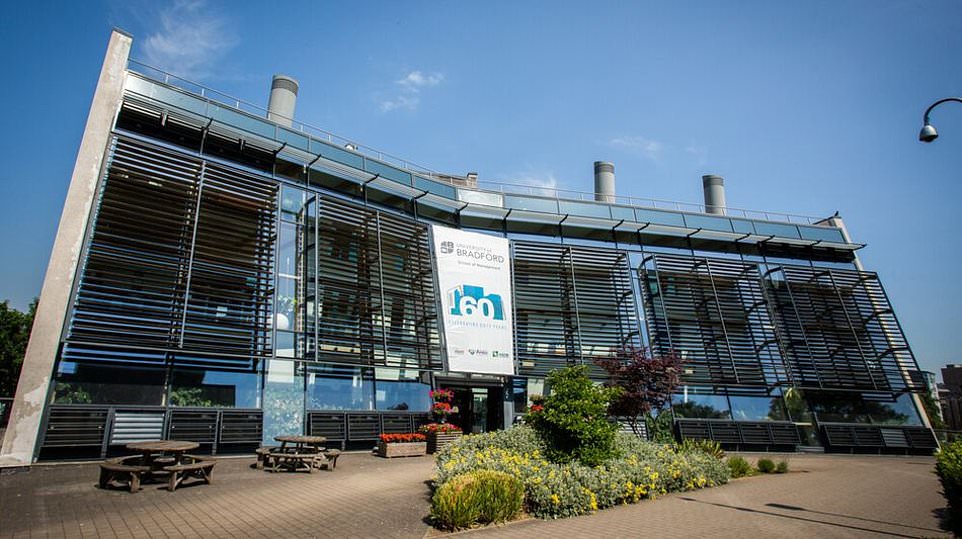
Overview
Bradford is the UK’s City of Culture in 2025, acknowledging the cultural diversity of the city and its university, which has long been one of the most socially inclusive in the country. More than one third of admissions gain their place with a contextual offer, and the university recruits four in five of its students from the immediate area and more widely across Yorkshire, ensuring the ethnic, social and cultural mix on campus is aligned with the city beyond. Admissions in September 2023 rose to a new record of just under 3,000 – 10% more than the previous year. Almost 75% of students land high-skilled jobs when they leave – testimony to the input employers have in designing many courses, and the professional accreditation that often comes with the degrees, too. Bradford offers an extensive range of science, technology, engineering and health-related degrees, and a significant proportion of graduates go into the NHS. The city campus is surprisingly green and has excellent sports facilities on site, with more to be found a five-minute walk away at the Sports Park.
Bangor University

Overview
Bangor was our Welsh University of the Year in the previous edition of this guide. This month it joins the exclusive club of universities with a medical school, as the North Wales Medical School opens its doors. Although Bangor has taught medical students for some years in partnership with Cardiff University, this gives them the chance to spend their entire five years of studying and training in Bangor. It will increase the university’s national appeal with a planned intake of 140 students each year. Currently, around 40% of undergraduates come from Wales, but around 20% come from North West England. Applications dropped by 8.5% in 2023 to a little under 9,000, but admission numbers remained largely unchanged. Bangor’s academic profile is tied to its coastal and mountain environment, with courses in forestry, adventure sport science, ocean science and marine conservation, alongside the full range of more traditional academic offerings. The university even has its own marine research vessel called the Prince Madog.
Harper Adams University

Overview
This small university offering land-based (agriculture) courses certainly packs a punch, with alumni from Harper Adams filling 25% of the graduate positions within the UK food and farming industry. It aims to spread its excellence wider over the next two years, breaking out from its countryside home to teach at two new centres in Telford and Newport. The first-year completion rate is among the highest in the UK and the university is one of a small minority to achieve triple gold – covering an overall rating, student experience and student outcomes – in the latest Teaching Excellence Framework assessments. However, it has endured a tough year in the National Student Survey in which it has previously done very well, with scores for student experience putting it in the bottom 10 nationally. Scores for student support remain buoyant. The university farm contains dairy, beef and pig units, two flocks of sheep, poultry facilities and hectares of arable and grassland given over to research projects, which currently include work on breeding low-methane sheep and a hands-free farm given over to autonomous technologies and machinery. All courses come with a placement year, which keeps students focused on the ultimate prize of a career in this highly specialised and critically important area of the economy.
University of Plymouth

Overview
Plymouth is the only modern university (those created since 1992) to have both medical and dental schools. A broad portfolio of healthcare courses is about to get bigger still with the addition of foundation years to several courses this month, which will further widen access to these professions. New BSc degrees in osteopathy, chiropractic and social work with a foundation year are recruiting for a September 2025 start, adding to the more than 200 pathways into health and social care careers. The university is also among the pilot sites for the new medical doctor degree apprenticeship. There is further academic strength in marine science, the arts and sustainability. Plymouth is one of a small minority of universities to be awarded triple gold in the latest Teaching Excellence Framework, for its overall rating, student experience and student outcomes. The university is located on a central campus that has seen £100m of new facilities completed in the past year. Aside from the university’s strong academic reputation, many applicants are drawn to Plymouth for the lively maritime city vibe and the spectacular coastal and moorland scenery nearby.
University of Portsmouth

Overview
Portsmouth hopes the introduction of Connected Degrees this month will prove to be a significant draw for applicants. Uniquely, it offers flexibility around when students take their placement year. Traditionally it slots in before the final (third) year of study, but Portsmouth now offers the option of taking it after the last year. Students will remain part of the university and graduate after completing the placement. It allows students to take more time to explore their career options, study alongside friends throughout their studies rather than go off on placement after two years, and connect their studies directly with their career (as the branding implies) by using the placement year as a direct stepping stone into employment. Almost all Portsmouth degrees can be taken with this flexible placement option. Together with the opening of a London campus, the degree revamp should prompt an increase in applications, which dipped below 20,000 last year to their lowest point in the past decade and 40% below their level in 2014. The university has performed well in domestic rankings for some time, ranking once again this year among our top 10 modern universities (those founded since 1992). Set on a central campus in Portsmouth, this port city provides plenty of entertainment for the university’s 26,000 students.
Keele University

Overview
Keele celebrates its 75th anniversary this year with admissions at record levels, topping 3,000 for the first time in September 2023. It offers a splash of colour in the sometimes monochrome higher-education landscape, where one university can look much like another and the course portfolios can merge into one. Keele no longer requires students to study dual honours, but a large number of its courses are still two-subject degrees. In some instances, the combinations are complementary – chemistry with physics, environment and sustainability – but in others they are more striking – music production and psychology, computer science with neuroscience. All courses have a four-year option involving study abroad or a placement. Keele gained an overall gold rating in the latest Teaching Excellence Framework (TEF), one of just 15 multi-faculty institutions to do so in both 2023 and the previous TEF in 2017. It is popular with students, too, who voted it University of the Year in the 2022 Student Crowd awards, although recent National Student Survey results have been less spectacular. Keele makes much of its proximity to everywhere, occupying a parkland campus near Stoke-on-Trent that’s within an hour of Manchester and Birmingham, and within 90 minutes of London by train.
University of Hertfordshire

Overview
The University of Hertfordshire is centred around two campuses a 20-minute walk apart in Hatfield – the original College Lane campus and the newer de Havilland campus, built on the site of the town’s famous former aircraft factory. Hertfordshire’s location just 20 miles from the centre of London makes it an appealing option for students who want the bright lights of the capital nearby without having to pay its extortionate rents. Four in five students come from London and the counties immediately to the north and north-east of the capital. It is one of the higher-ranked modern universities, scoring consistently well for student satisfaction. It has a diverse student body, too – Asian and black students make up around half of the domestic intake, as do students who are the first in their immediate family to go to university. The university works closely with business and industry, both in the design of its courses and the provision of work experience. Its observatory, at its Bayfordbury campus, houses one of the largest telescopes available to students in the UK, and sports facilities are excellent, too.
Manchester Metropolitan University
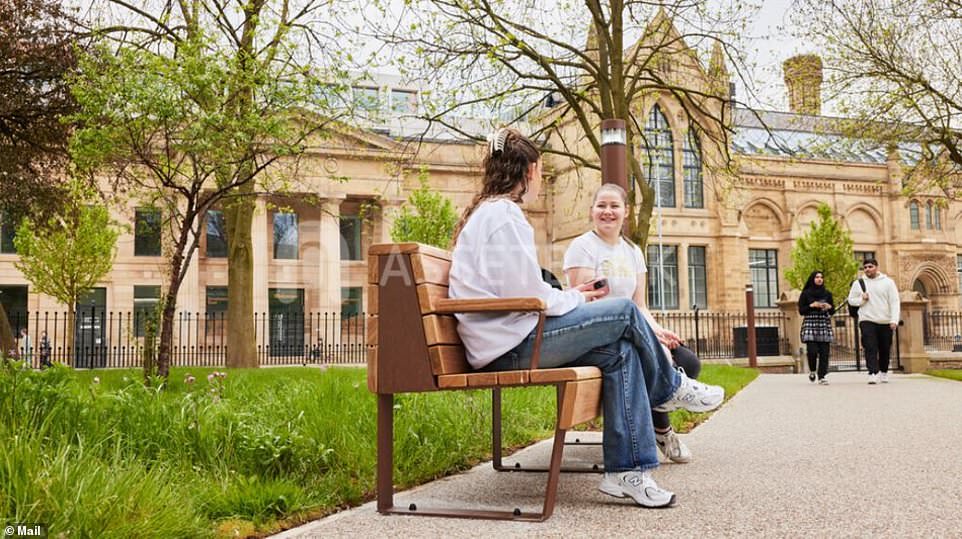
Overview
Manchester Met is one of the largest universities in the country, with around 30,000 undergraduates and a further 8,000 postgraduates. Its numbers were swollen by last September’s record intake of just under 11,000. Only three universities in the UK receive more applications than Manchester Met. A broad and largely vocational course portfolio, strong academic reputation and a ranking in domestic league tables that always sees it among the leading group of modern universities (those created since 1992) keeps the applications flowing. One of the most comprehensive programmes of financial and personal support makes the university particularly appealing to students from families with no experience of higher education. More than half of the intake come from Lancashire, Cheshire, Merseyside and Greater Manchester, but the remainder come from across the UK, many drawn by Manchester Met’s considerable presence in the training of nurses, healthcare practitioners and teachers. The university is also one of the biggest providers of degree apprenticeships, with close to 2,500 learners on campus, and has been the top-rated university training provider for five successive years in the Rate My Apprenticeship rankings.
University of Sussex

Overview
The University of Sussex was ranked among the top UK universities for sustainability in the 2025 QS World University Rankings. Occupying a site that borders the South Downs National Park, the university has committed to giving more than 42% of the land on the Sir Basil Spence-designed campus to nature by 2027. This stuff matters to Sussex’s students. Applications are running high at upwards of 20,000 per year, and admissions have been similarly buoyant, bar last year’s near-1,000 dip. Sussex recruits three-quarters of its students from London and the South East, with around 85% educated in non-selective state schools. The university maintained its overall silver award in last year’s Teaching Excellence Framework, although it will have been disappointed by the bronze for student experience. It is embedding employability into the curriculum in a bid to get more students into high-skilled jobs – currently one of the poorer areas of performance in our ranking. The Career Lab programme offers them internships, mentoring, insight visits to employers and the opportunity to become a consultant to a business or community organisation.
Teesside University
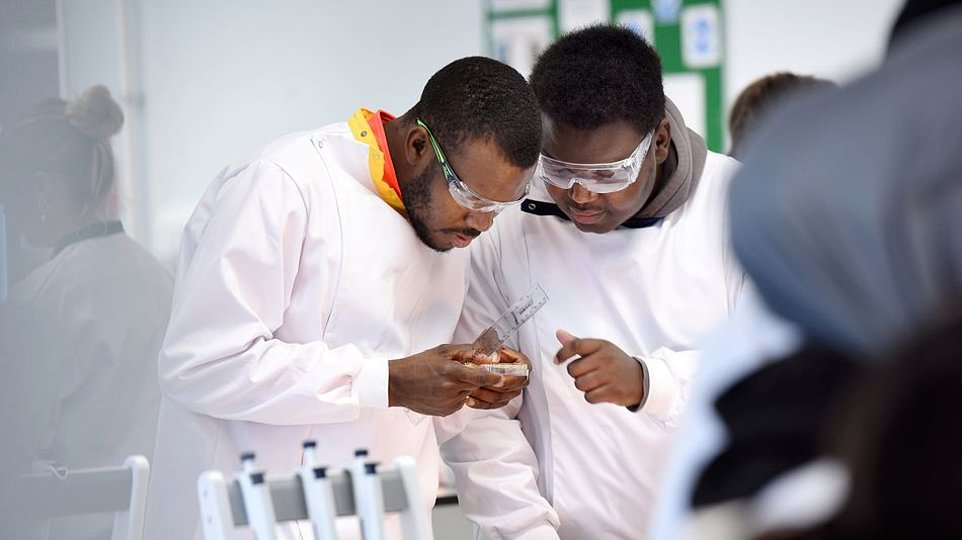
Overview
Teesside, which was shortlisted for our University of the Year title last year, wipes out digital poverty on campus at a stroke with its iPads-for-all policy. In perhaps the most socially progressive initiative at any higher-education institution, Teesside’s Advance scheme provides an iPad loaded with Office 365, plus £100 annual credit to spend on online learning resources. It allows the university to standardise digital elements of course delivery and integrate its immersive and simulated course components with the software it knows all students have access to. Teesside is aware such generosity is not misplaced; it has one of the most socially diverse student intakes in the country. A decade or more of investment has transformed the campus, just off Middlesbrough town centre, into a pedestrianised precinct of landmark buildings. Its courses have employability elements embedded into them and courses are designed with considerable input from business. This translates into a strong graduate employment track record and good earnings. Such success also feeds into the latest Teaching Excellence Framework, as Teesside was one of a small minority of institutions to win golds for its overall rating, student experience and student outcomes.
University of Salford

Overview
Salford is in a good place, with the past two years having seen record applications and admissions. The university has comfortably the most diverse student population among the three universities that effectively share a huge student quarter just off Manchester city centre, with high numbers of ethnic minority and mature students. This diversity is reflected in the practical help offered to students, which includes a universal contribution of £450 towards course materials and books over a three-year degree (and as much as £1,500 for some first-generation students), commuter bursaries and parental bursaries to help with childcare costs. A university since 1967, Salford has a history going back more than 100 years before that when it started life as a mechanics’ institute. It continues to serve industry today, building expertise in robotics, automation systems, and digital and smart living. The university has a strong presence in nursing and healthcare, with the new Clinic Building about to add considerably to the facilities on tap. Salford has also gained a strong reputation in media and television, benefiting from its proximity to MediaCity, which is home to BBC and ITV studios as well as numerous independent production companies.
University of Kent

Overview
Formed in the 1960s, the University of Kent borrowed its collegiate structure from an older generation of universities. Students join one of eight colleges, the majority named after people who pushed back the boundaries of knowledge – Sir Charles Darwin, Alan Turing, Lord Rutherford to name three. The colleges form the social heart of the student experience, breaking down this mid-sized university of around 15,000 undergraduates into bite-sized chunks. Seven of the colleges are on the university’s original campus, a green 300-acre site in the historic city of Canterbury, with the eighth, Medway College, on Kent’s Medway campus, shared with Canterbury Christ Church and Greenwich universities, which takes in the historic Royal Naval dockyards in Chatham. Applications are down by nearly a third from their peak in 2016, but the university achieves admirable diversity on campus. Black students made up almost one quarter of the undergraduate intake last year, with more than 40% overall drawn from ethnic minorities. Partnerships with local schools and colleges help maintain high numbers of students drawn from under-represented groups.
SOAS University of London
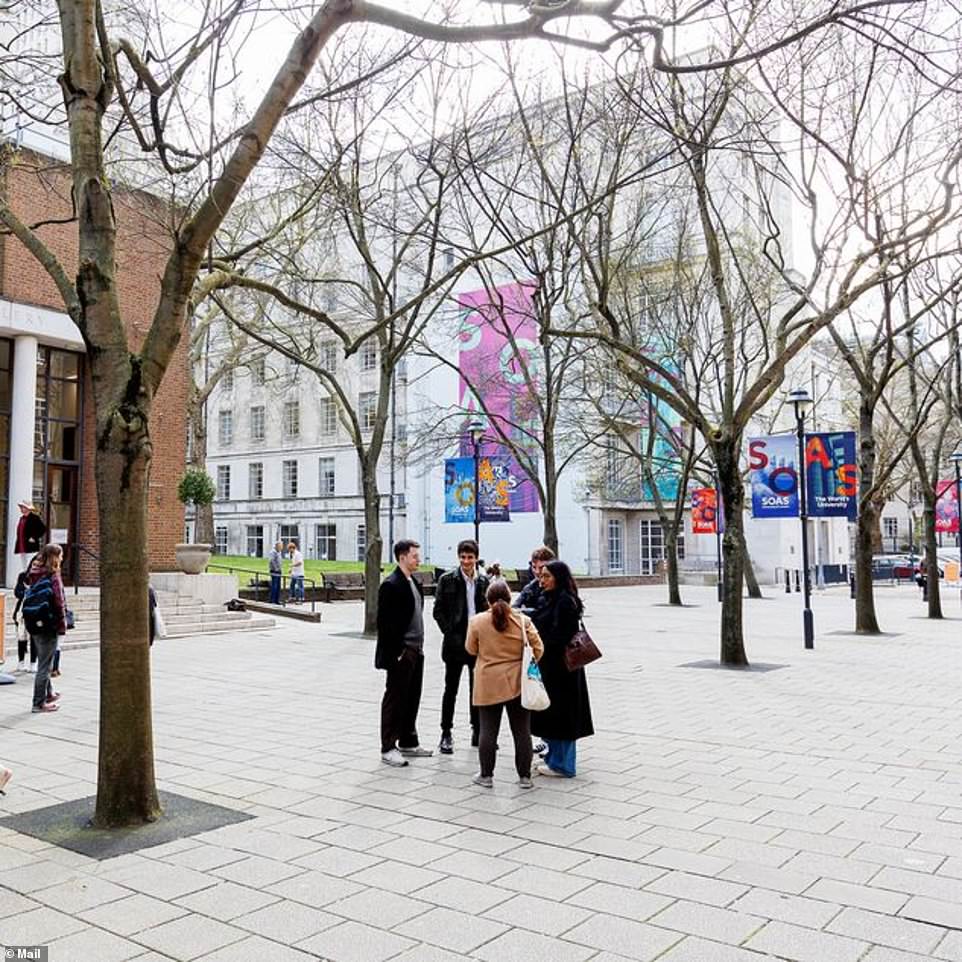
Overview
Soas markets itself as ‘the world’s university’ owing to a unique perspective on higher education – a perspective that is much in demand presently, judging by the buoyant application figures and record recruitment last year. Everything here is viewed through the prism of Africa, Asia and the Middle East – strategically, economically and politically important, and hugely populous, parts of the world. It drills down in great detail into subjects that struggle to get a look in elsewhere. Where else would it be possible to spend a year abroad studying Swahili, Turkish, Hebrew, Persian, Arabic, Hindi, Urdu, Sanskrit, Indonesian or Vietnamese as part of a broader BA in languages and cultures? The titles of many of its degree programmes are similar to those offered elsewhere in the University of London and across the UK, but the content is not. Law has options in Islamic law and law and society in south Asia, as well as unique options such as oceans and outer space law, and topical ones such as asylum and immigration law. The course portfolio appeals to a diverse, cosmopolitan student population, with around three-quarters drawn from ethnic minorities and a similar number recruited from within the capital.
University of Huddersfield

Overview
Huddersfield has been racking up the awards in recent months. It is one of a small minority of universities to have achieved triple gold in the Teaching Excellence Framework (TEF), for its overall rating, student experience and student outcomes. Things improved further when Ofsted rated its degree apprenticeship provision outstanding – making Huddersfield at the time only the second university to achieve this feat in recent years. The university was praised for ‘[valuing] the role that its apprenticeship programmes play in providing opportunities for people from a wide range of socio-economic backgrounds to access higher education opportunities and in retaining talent in the local region’. The Ofsted inspectors’ words go to the heart of the university’s mission. The emphasis on the world of work extends beyond apprenticeships, with most degrees offering students the chance of industry experience with placements ranging from one to 48 weeks. The university is a big supplier of graduates to the public sector, including health and social care professions and teaching.
University of Lincoln
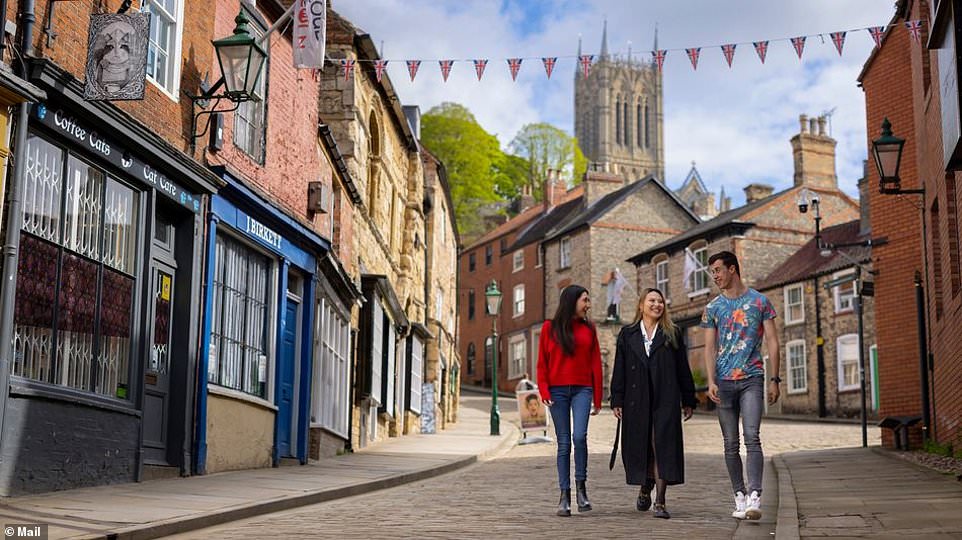
Overview
Student life at Lincoln in recent months has taken place against a backdrop of increasing concerns over the university’s finances, although the university stresses it expects to break even or make only a small deficit in the financial year that ended last month. In January, it took the unusual step of publicly discussing the financial pressure it was under and, when 220 job losses were announced some weeks later, it blamed ‘growing financial headwinds’. This turbulence has been the first real reverse experienced by the university in two decades of near-continuous expansion and investment, transforming the fabric and status of the institution. Lincoln has invested more than £375m in the waterfront Brayford Pool campus to create the mix of old and new that makes it so distinctive. An old warehouse is home to the main university library and a converted train engine shed is now Lincolnshire’s largest entertainment venue and one of the students’ union’s three sites. Alongside these buildings are modern facilities housing Lincoln’s academic schools. It is one of just eight modern universities to have its own medical school, run in conjunction with the University of Nottingham. There is a second campus at Holbeach, which is home to the National Centre for Food Manufacturing. It offers part-time courses, mostly to food-industry employees.
Abertay University
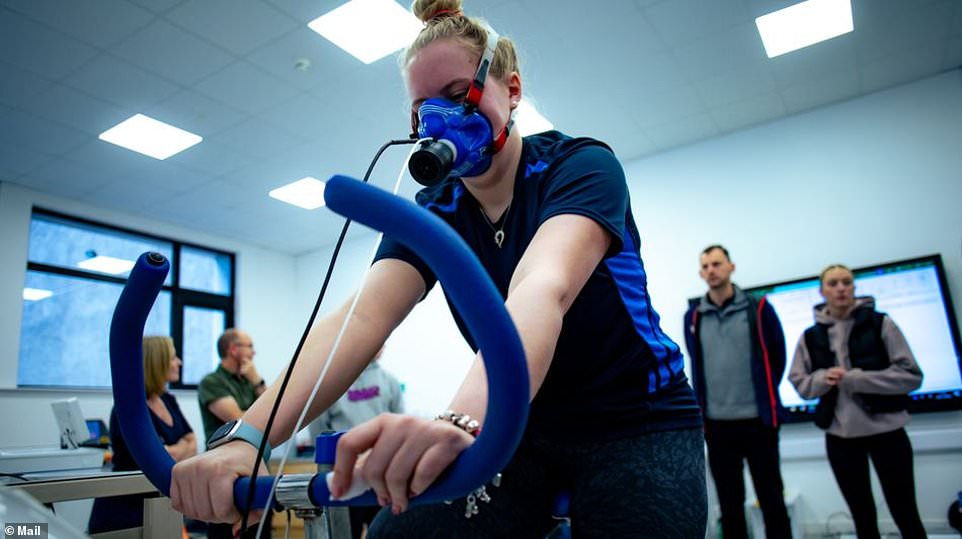
Overview
Scotland’s smallest university has forged a global reputation in computing, gaming and cyber security. Dundee-born David Jones, the creator of the game Grand Theft Auto, was instrumental in setting up the world’s first computer gaming degree in his hometown at Abertay in 1997 – one of just 45 undergraduate degrees offered. The number of applicants for admission in September 2023 fell to its lowest level in a decade, down by 14.4% on the previous year, and 93% of last year’s intake came from Scotland itself. Size is no hinderance to the university, which has a compact, city-centre campus, however. ‘Our basket of strengths – small, modern and supportive – benefit all our students but are a particularly good match for students from disadvantaged backgrounds,’ the university told us. Students love Abertay, scoring it consistently highly in the annual National Student Survey and helping it to a top three ranking in Scotland among modern universities. Scotland’s sunniest city has a vibrant arts scene and buzzing nightlife, too.
Liverpool John Moores University

Overview
Applications and admissions both fell by more than 10 per cent last year, but with around 22,500 undergraduates Liverpool John Moores University (LJMU) remains one of the country’s bigger institutions. It recruits strongly from the North West – and from Merseyside in particular – with students from the region making up more than 3,500 of the 6,300 UK admissions in September 2023. It is also one of the most popular English universities with students from Northern Ireland, for whom there is an extended, customised induction programme. The university took its name from one of Liverpool’s leading businessmen and philanthropists, Sir John Moores, when it officially became a university in 1992, but it has a history stretching back more than 200 years. There are two campuses in the city centre: Mount Pleasant, which is home to the faculties of business and law, and arts, professional and social studies, and City where health, science, and engineering and technology students are based. There is a choice of more than 200 undergraduate degrees. Copperas Hill, home to the student life and sports building sits between the two campuses. LJMU is a big supplier of graduates to the public sector, especially teachers and nurses, and offers courses with plenty of industry-informed, hands-on learning. The university has one of the more diverse student populations, and a significant spend on bursaries and scholarships provides financial help to many.
Staffordshire University
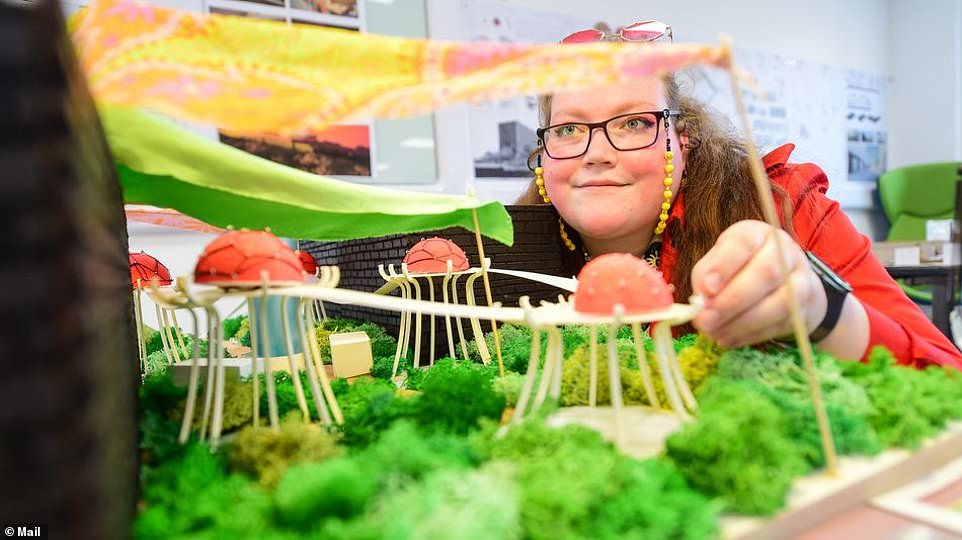
Overview
The Queen Elizabeth Olympic Park is still breaking records 12 years on from London 2012. Today the bar being raised is an academic one, as universities like Staffordshire flock to the capital’s most happening higher-education destination, the Here East campus. More than one fifth of Staffordshire’s undergraduate intake came from the capital last year – 12 times the number admitted just five years before. Many of them enrol at this spot in east London, which is home to the university’s Digital Institute and offers 10 undergraduate and postgraduate degrees. New offerings being taught for the first time this month include cyber security and cloud and network computing. Applications to Staffordshire, which has its largest campuses in Stoke-on-Trent and Stafford, are higher than at any point since 2015, with a record total of more than 5,000 students admitted last year. The university has invested heavily in what it dubs ‘simmersive’ technology, which recreates real-life work and crisis scenarios using simulation and immersion suites for those on vocational courses. This translates into an excellent graduate employment record. Few can rival Staffordshire’s commitment to social diversity on campus, too, and it has one of the biggest portfolios of degree apprenticeships.
University of Stirling

Overview
The unalloyed beauty of Stirling’s loch-side campus takes some beating. But don’t just take our word for it. The International Student Barometer recently judged Stirling to have the best campus environment in the UK, and third best in the world. What gets everyone so excited? A 330-acre campus on the edge of Stirling, built around Airthrey Loch, with the Ochil Hills piled up behind it and a castle in the grounds. Opened in the 1967, some of the original buildings are now Category A-listed, such is their architectural merit. The university is well aware that the campus is a key recruitment asset and is investing in it on a rolling basis. More than 85% of the 9,000 undergraduates come from Scotland, but the university recruits pretty evenly from across the rest of the UK. Students are also drawn to the courses, which retain a broad-based approach across the first two years of study and often offer a choice of September or January start dates. Stirling’s status as Scotland’s University for Sporting Excellence means its facilities are outstanding. For the culture vultures there is the Macrobert Arts Centre, with its theatre, cinema and exhibition space.
Sheffield Hallam University
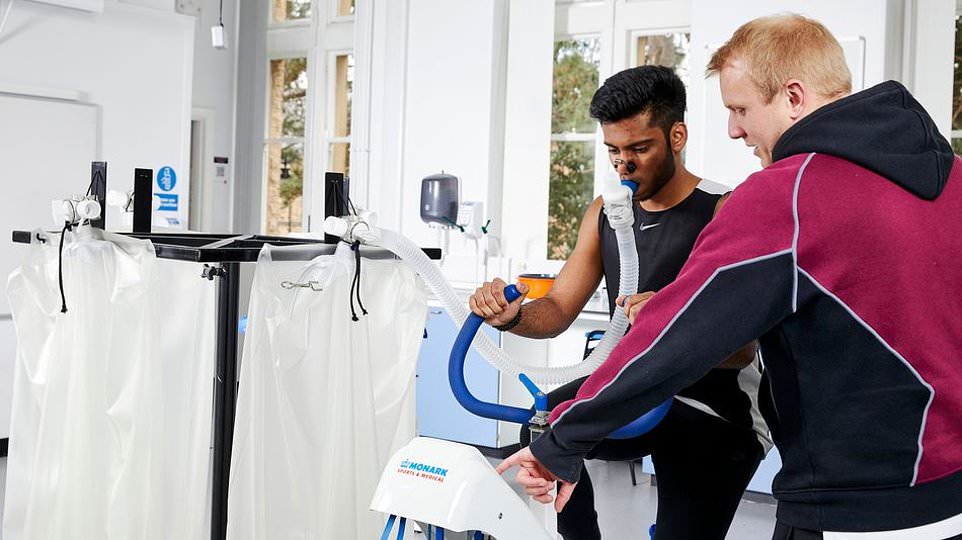
Overview
Sheffield Hallam University (SHU) offers no less than three named support advisers to its students when they enrol – a student support adviser to provide personal help, an academic adviser to assist them with their studies, and an employability adviser for planning the start of their career. The aim is to keep all students on track with their studies and then launch them successfully into their first jobs. It works, too, with the university having one of the strongest graduate employment records of any modern university. Rooted firmly in its community, it trains more than a quarter of the new teachers in Yorkshire annually. Earlier this year, its Institute of Education became the first university to be rated outstanding by Ofsted for its teacher training across four age groups: early years, primary, secondary and post-16. It is one of the biggest suppliers of healthcare graduates in the country, and its business school is the largest in the UK, with some 7,000 students. SHU’s marketing handle – Knowledge Applied – succinctly captures its ethos and approach to higher education. A Civic University Agreement enshrines its commitment to contribute to the region’s economy and jobs, education and skills, health and wellbeing, and community and regeneration.
St Mary’s University, Twickenham
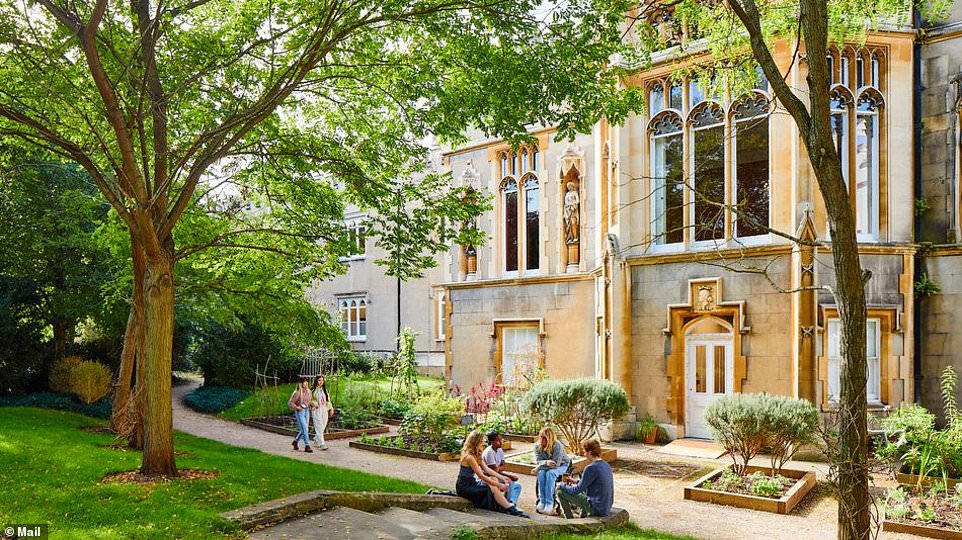
Overview
St Mary’s – alma mater of Sir Mo Farah – is used to topping the podium, so getting a gold for student experience in the latest outcomes under the Teaching Excellence Framework will not have induced a bout of vertigo. The university also earned two silvers for its overall rating and student outcomes, but it is the student experience that makes the institution stand out. Located on a leafy campus in the affluent south-west London suburb of Twickenham, it is unlike any other university in the capital, with just 6,000 students overall and fewer than 4,000 undergraduates. In a city dominated by large – occasionally impersonal – universities, St Mary’s offers an individual experience, reflected in its consistently excellent scores in the National Student Survey. It has been a university for only the past decade but will celebrate its 175th anniversary in 2025. Originally a Catholic teacher training college, it offers a much broader portfolio of courses now, although teacher training remains a key activity. Sport is important, too. Nineteen athletes based at the university’s Endurance Performance Centre were selected to compete at the UK Athletics Championships in June.
Coventry University

Overview
Coventry hit the headlines for the wrong reasons last winter, as it became the most high-profile university to be struck by financial problems. The university admitted ‘difficult decisions’ will need to be taken, with £40m of cuts to be made to the 2023-24 budget and a further £55m predicted for 2024-25. The blame was pinned on the recruitment of a smaller than expected number of students in September 2023. Yet Coventry is one of the top-ranked modern universities, having expanded into six campuses in Coventry, London and Scarborough, and the verdict of assessors for the Teaching Excellence Framework in 2023 was glowing. It earned a gold award overall, with a further gold for student experience and silver for outcomes. It was found to have ’embedded outstanding teaching, feedback and assessment practices that are highly effective and tailored to supporting its students’ learning, progression and attainment’. With around 38,000 students, Coventry is one of the biggest institutions in the country. The separate CU Coventry, near to the headquarters, offers a university-lite experience with the option to build slowly towards a degree, module by module.
Nottingham Trent University

Overview
Nottingham Trent University (NTU) is among the biggest and most successful modern universities, with its high ranking attracting a well-qualified student population. It works hard to remain accessible, however, and was the first university to sign the Social Mobility Pledge, established in 2018 by the former education secretary, Justine Greening, to promote equality of opportunity. No university has recruited more students than NTU over the past five years, each year welcoming more than 10,000 new undergraduates. Ethnic minority students make up around one third of the cohort, with black students, for whom NTU runs a Black Leadership Programme, the largest minority grouping. A campus investment programme worth £250m over the next five years will add new learning facilities and make further strides in increasing the institution’s sustainability. There are several Nottingham campuses – City campus is home to six academic schools and the new Nottingham School of Art and Design; Clifton campus houses engineering, healthcare and sport students; Confetti Nottingham is home to more than 2,000 creative technologies students; and the outlying Brackenhurst campus is a 500-acre countryside site for animal, rural and environmental sciences and home to NTU’s veterinary nursing centre. There are further sites in London and Mansfield.
Robert Gordon University

Overview
For many years, Robert Gordon University (RGU) in Aberdeen has punched well above its weight in terms of graduate employment. It used to be easy to attribute that success to boom times in Oil City, but less so now. These are harder times for the UK oil and gas industry and Aberdeen has had some adjustments to make, but RGU sails on. If you want a university with eminently attainable Higher grade requirements that offers students outstanding career prospects, look no further. Around four in five graduates are in high-skilled jobs within 15 months of leaving, having taken courses that have optional or compulsory placement years that can introduce students to their future employers. Business and industry have input on the design of courses here, and the world of work is never far away from the lecture theatres and laboratories. RGU occupies a modern riverside campus close to the centre of Aberdeen; Garthdee is home to around 10,000 undergraduates and 5,000 postgraduates, as well as 550 graduate apprenticeship learners. The cultural, social and night-time distractions are commensurate with Aberdeen being Scotland’s third largest city. And the surrounding coast and mountains offer endless possibilities for those into the great outdoors.
University of Greenwich

Overview
One of the most successful modern universities, Greenwich is in fact steeped in history. Headquartered on the River Thames in the Sir Christopher Wren-designed Old Royal Naval College, Greenwich has one of the most instantly recognisable campuses in the world. All domes and colonnades, it dominates the skyline and provides a stunning backdrop to student life. Greenwich secured an overall gold rating in the Teaching Excellence Framework last year, earning a further gold for student experience and a silver for student outcomes. The accompanying report praised its three-week GREFest student induction programme and a ‘clear alignment between teaching, curriculum and employability support that is coherent and works to support successful outcomes’. Greenwich is one of the most ethnically diverse universities in the UK. There are further campuses at Avery Hill, also in south-east London, which is home to the bulk of health and social care students, and Medway in Chatham, Kent, where the schools of pharmacy, science and engineering are located. The latter campus also has strong naval connections, with many of its buildings historic former Royal Navy premises.
University of West London

Overview
The University of West London (UWL) markets itself as The Career University, lest anyone be in any doubt as to the umbilical connection here between studying and getting a job afterwards. Developments such as the new school of medicine and biosciences seek to provide students with hands-on experience tackling the needs of local communities, while students studying for their Airline Transport Pilot Licence as part of their degrees have access to the university’s Boeing 737 flight simulator. UWL’s connections to the nearby Heathrow airport and British Airways are typical of its business links which give students access to more than 1,000 part-time, internship, graduate and volunteering opportunities. The university monitors all placements to ensure that they are of the highest quality, too. In addition to its focus on graduate jobs and making a difference in local communities, UWL has a third key mission which saw it recognised last year as our University of the Year for Social Inclusion. Few can match the diversity on campus here, with 68% from black, Asian and other ethnic minority groups; more than 60% from homes where they are the first to go to university; and around half being mature returners to education.
University of Wolverhampton
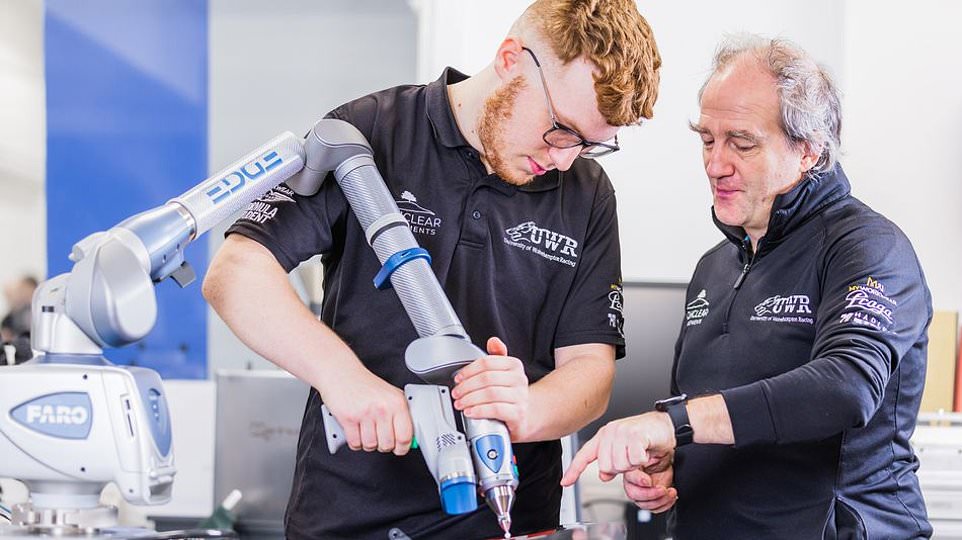
Overview
Whatever way you cut the data, social inclusion runs through the University of Wolverhampton like a stick of rock. No university has more students who are the first in their immediate family to go to university; white, Asian and black students are in almost perfect balance on a racially diverse campus; and mature students make up nearly half of the student body, encouraged back into education by Wolverhampton’s flexible admissions policies. The university is an invaluable resource to the region it serves and from which it drew 83% of its most recent intake. With campuses in Wolverhampton itself, as well as Walsall and Telford, the university has an extensive footprint. All sites have seen hefty investment recently, providing students with new cutting-edge facilities. These include Europe’s largest specialist architecture and built environment campus on the site of Wolverhampton’s former Springfield Brewery, and the Marches Centre of Excellence for Health and Social Care in Telford, which is helping to address critical shortfalls of health professionals in the area.
University of Suffolk
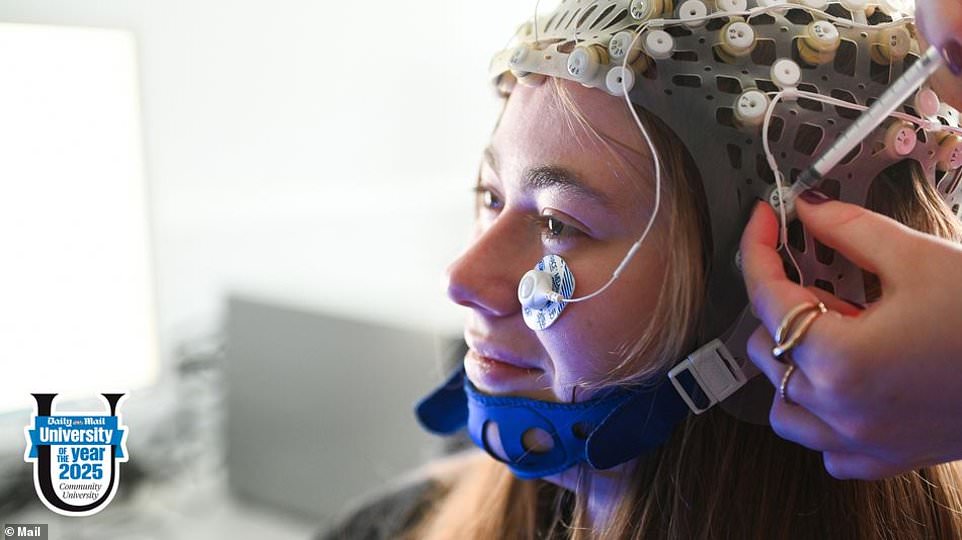
Overview
The University of Suffolk (UoS) is the inaugural winner of our Community University of the Year award, which recognises the positive impact the institution is having on the towns and villages of East Anglia, where it is located. It has only been an independent university since 2016, but it soon set about establishing a strong identity. This year, following the completion of the university’s new Centre for Dental Development in Ipswich, the university and the Suffolk and North East Essex Integrated Care Board signed a five-year contract to deliver 18,000 hours of NHS-only dental appointments through UoS’s Dental Community Interest Company. This social enterprise will help plug the huge hole in the availability of NHS dental treatment locally and is one of several community initiatives that the university runs which helped earn it our award. The attractive main campus on the Ipswich waterfront has seen considerable investment in facilities as it builds towards a projected 10,000 students by 2030. The university has a distinctive student demographic, with more mature returners to education than any other university, most of them recruited locally. This demographic and a focus on vocational courses translates into significant numbers of students landing high-skilled jobs.
University of Sunderland
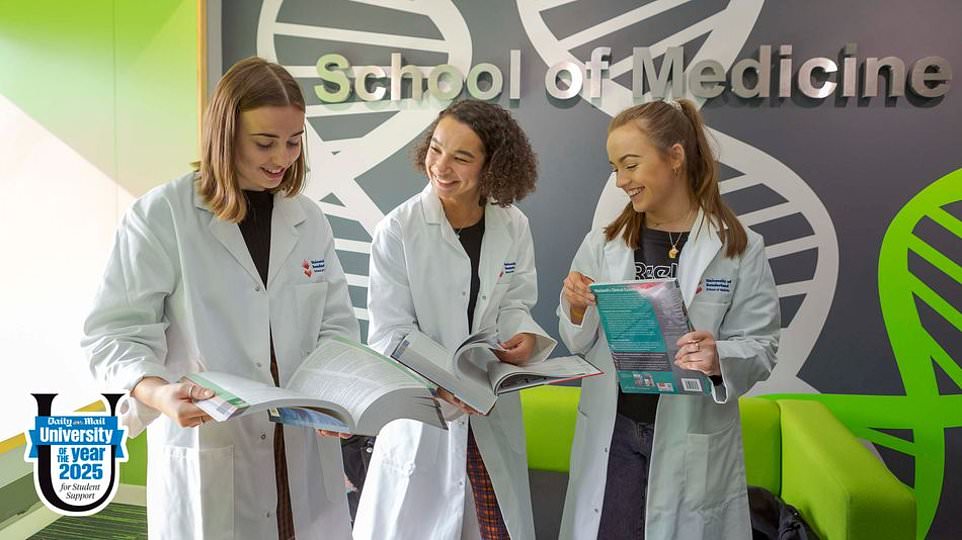
Overview
Local, national and global. Sunderland, London and Hong Kong. This is how Sunderland, our University of the Year for Student Support, likes to market itself – a vocationally focused university that has expanded from its original Sunderland headquarters to offer its brand of higher education more widely. With more than 60% of undergraduates recruited from homes where parents did not go to university, there are few institutions in this guide that can better Sunderland’s record for social inclusion. Financial support is strategically targeted to ensure these students are supported best of all, and there is a concerted attempt to diversify the intake for medicine degrees through generous bursaries, subsidised accommodation and lowered entry grades for local recruits living in areas with the lowest rates of progression to higher education. The university is also a leading provider of degree apprenticeships, with more than 900 learners on programmes as diverse as senior journalist, district nurse, engineering and social work. Overall applications last year were at their highest since 2015; more than half of the intake came from the North East and 27% from London – an indication of the buoyancy of the London campus.
University of the West of England

Overview
The University of the West of England (UWE) has a physical footprint that spans Bristol, but the university is working hard to ensure that its eco footprint is considerably smaller. New accommodation for 900 students opening this month is claimed to be the largest low-carbon development of its kind in the country, enhancing UWE’s appeal to today’s environmentally aware students. The Purdown View development is on UWE’s main Frenchay campus to the north of Bristol, where most courses are based. There is also the City campus – home to creative and cultural industries courses – which is spread across four sites, offering views of a deer park and the harbourside. It features the Arnolfini and Spike Island arts venues, and the Watershed film culture and digital media centre. The Glenside campus in Fishponds, a 15-minute bus ride from the city centre, is the base for allied health, social care, nursing and midwifery students. With more than 25,000 undergraduates and close to 12,000 postgraduates, UWE is one of the UK’s biggest universities, and applications have never been higher. Roughly half the undergraduate intake comes from the immediate region, but UWE’s reputation draws in students from across the country.
Plymouth Marjon University

Overview
Consistently outstanding results for teaching quality, student support and student experience in the National Student Survey speak volumes about student life at Plymouth Marjon University. Students are a name not a number here; an undergraduate intake of around 800 a year allows for greater individual attention and a comprehensive support network. Students enrol on work-focused courses, many with placement opportunities, and each student is assigned a personal development tutor, who runs a series of group and one-to-one sessions throughout the year to help students work on their future plans. Marjon was founded as a teacher training college more than 180 years ago and is still strong in this area, while rapidly expanding its nursing and healthcare provision, too. Work is underway on a new Health Education and Community Wellbeing Hub, which will expand a successful model of developing student-led programmes in community settings, bringing benefits to both students and the local population. A tight course portfolio of just 41 subjects at undergraduate level also includes a significant number of sport options. Sporting brains breed sporting bodies: Marjon punches well above its weight in inter-university sports competitions.
University of Chester

Overview
The university recruits more than half of its intake of UK students from within its home patch in the North West. Many are drawn from groups under-represented in higher education. Just under a third of last year’s intake were mature returners to education, and Chester has one of the highest proportions of students who are the first in their immediate family to attend university. Sophisticated support structures – acknowledged by good scores in this area in the National Student Survey and coming second in the 2024 Whatuni Student Choice University of the Year award – keep students in the fold. Progression and degree completion rates are at much higher levels than are the norm with such a diverse intake. The university is largely based in the attractive walled city of Chester, but it has outposts in Birkenhead and Warrington, as well as its land-based centre Reaseheath, near Nantwich. Employers help with the design of courses, which all have a focus on digital skills and use continuous assessment to gauge student achievement.
University of Derby

Overview
Derby is investing heavily in its estate and reshaping its course portfolio to keep the institution at the academic cutting-edge – and to keep its graduates in demand with employers. A new business school will be open for next September’s intake – a key enhancement for a university that works closely with business and industry. Derby ranks second in our subject tables for business studies. More than 60 new courses and nine new degree apprenticeships will diversify Derby’s appeal, too. They include zeitgeisty degrees such as artificial intelligence, as well as highly relevant twin-subject courses like English and publishing, psychology and sport studies, and popular music and business management. The university has a strong regional identity, recruiting three-quarters of its students from the East and West Midlands. A mid-sized university of around 20,000 students, it is based on four sites in Derby and headquartered at Kedleston Road, with a healthcare outpost in Chesterfield. It provides a significant number of graduates to the public sector (via nursing, teaching and social work especially). This helped its strong performance in our jobs ranking, which is based on the proportion of graduates going into high-skilled jobs within 15 months of leaving.
Aberystwyth University
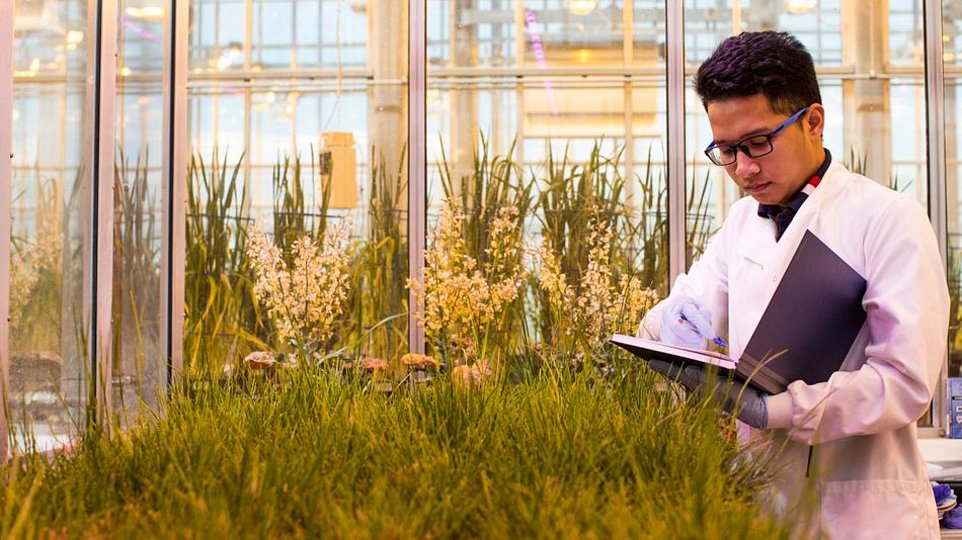
Overview
Less than a decade ago, Aberystwyth’s results in the annual National Student Survey (NSS) put it outside the top 100. Today, it is within the UK top 20 for each of the three NSS measures in our ranking, and student satisfaction is at a level rarely seen in the elite Russell Group, thanks to its relentless focus on the student experience. Students from all backgrounds feel supported here. After a significant dip in applications in the immediate pre-pandemic years, numbers have recovered. One of the smallest universities in this guide, the strong community spirit helps breed a fierce loyalty towards ‘Aber’, as it is affectionately known. Despite the Welsh seaside resort’s remoteness and distinctly average road and rail connections, it recruits on a UK-wide basis, and less than a third of the intake comes from Wales. The West Midlands and South West are fertile recruiting grounds for the university. There are plenty of rooms in university halls, including in Pantycelyn, which hosted King Charles when he was learning Welsh ahead of his investiture as Prince of Wales in 1969.
Edge Hill University

Overview
The latest piece of the jigsaw that has seen the creation of an ultra-modern, spacious, attractive campus at Edge Hill University (EHU) in Lancashire falls into place this month with the opening of a swathe of new facilities. But EHU has been making waves for some time now. It is one of eight modern universities – those gaining their university title since 1992 – to have its own medical school, which is the cherry on the cake of an extensive and respected suite of healthcare courses. It has one of the strongest records of widening access to higher education and is not afraid to stand out from the crowd by keeping prices low on campus for all rather than offering eye-catching bursaries to help the most impoverished few. The former Times Higher Education University of the Year began life as a teacher-training college. It is the biggest supplier of newly-qualified teachers in the region today and was the first provider in England to be rated outstanding by Ofsted across all three age ranges (primary, secondary and further education) under the new tougher assessments. It also supplies a large number of graduates to other areas of the public sector, notably health and social care and policing.
Oxford Brookes University

Overview
Oxford Brookes University (OBU) has one of the best graduate employment records of any modern university, with around three quarters landing highly skilled jobs. It was the first UK university to introduce the Grade Point Average (GPA) system alongside the standard UK degree classifications. The GPA has international currency and allows easy comparison between students’ attainment at OBU and other universities worldwide. The maximum score of 4.0 is based on all three years of studying, and not just on assessments in year two and three, as is the norm in the UK. OBU is different also in its student profile. It is among the 40 universities that recruit the fewest first-generation students (those whose parents did not go to university) and has the same proportion of students recruited from independent schools (around one in five) as plenty of highly selective Russell Group universities. Many of the 12,500 undergraduates are based on OBU’s central Oxford campus in Headington. There are two outlying campuses – Harcourt Hill, home to teacher trainees, and Wheatley, which is due to close, with those studying under the faculty of technology, design and environment transferring to new premises in Headington. There is also a campus for nurses in Swindon.
Cardiff Metropolitan University

Overview
Cardiff Met, our Welsh University of the Year, is benefiting from its home city’s current status as one of the UK’s hottest student destinations. Serving a more local market than its Russell Group neighbour, with more than half of all UK-resident students coming from Wales, a record 12,500 applications were received for courses starting in September 2023. The number admitted was beaten only by the year before. Breaking records is something that comes naturally for this most sporting of universities, which regularly ranks in the top 30 for sport in the UK despite its relatively small size. (There are around 8,500 undergraduates). Its outstanding facilities include a new strength and conditioning suite and the National Indoor Athletics Centre. As well as the two teaching campuses, Cyncoed and Llandaff, there is a third residential campus, Plas Gwyn. The school of education and social policy is based at Cyncoed, to the north-east of the city centre, while the schools of management, technologies and art and design are based at Llandaff. The school of sport and health sciences is split across the two. Cardiff Met was named University of the Year by Times Higher Education in 2021.
University of Brighton
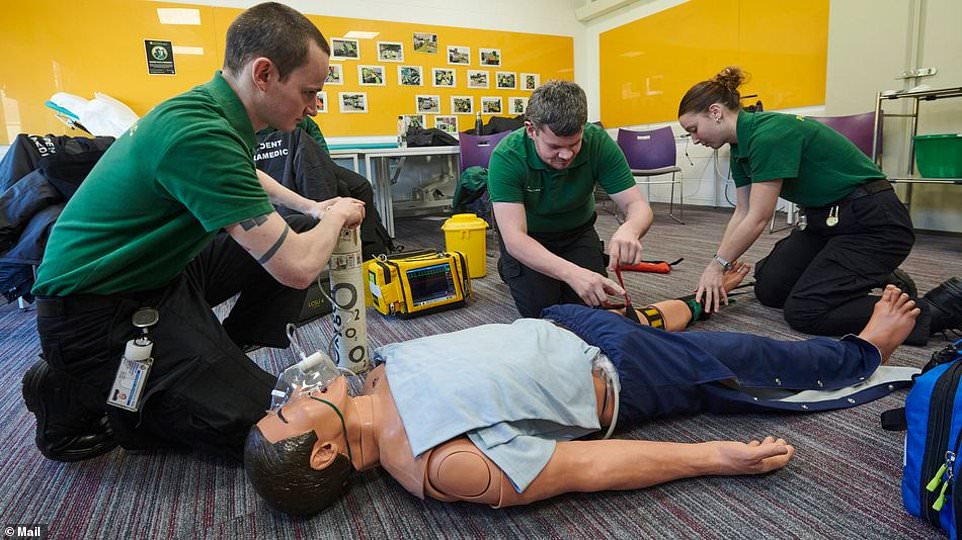
Overview
The University of Brighton sits in the upper echelons of the modern university sector, with a strong academic reputation and graduate employment record. It was the first modern university – those created since 1992 – to be awarded a medical school. Newly centred on the fashionable coastal spot of Brighton alone (following the closure of its Eastbourne campus over the summer), the university has invested in new academic, social and sporting facilities, plus five student halls, to accommodate the influx of students from along the Channel coast. There are three campuses within Brighton – Falmer, Moulsecoomb and City – each with a distinct vibe. The city of Brighton and Hove long ago ditched its ‘kiss me quick’ image and is now one of the most fashionable coastal spots. Although applications for the 2023 admissions cycle fell a little, applications and admissions have been building back to the levels of 10 years ago. The university is one of the latest to introduce a contextual admissions scheme, which should help diversify an intake which sees around 44% of students drawn from homes where neither parents went to university.
Brunel University London

Overview
Brunel sits at number 342 in the 2025 QS World University Rankings, up 70 places since the 2023 edition. International success is important for a university which recruited around one in five of its students from overseas last year. This campus university on the north-western outskirts of London offers a higher education in the capital without the claustrophobia and congestion, although applications and admissions in 2023 were at their lowest levels of the past decade. More than 72% of Brunel’s UK students come from Greater London, and it is one of the most socially and culturally diverse universities in the country, drawing around half of its students from homes where parents have not gone to university – a statistic that explains the informative (and rare) Information for Parents and Carers section on the university website. Life sciences, business and computer science are the most popular courses. Sports facilities are excellent, particularly for athletics, and the university punches above its weight in inter-university competitions, sitting inside the top 40 in this year’s national rankings .
University of Central Lancashire
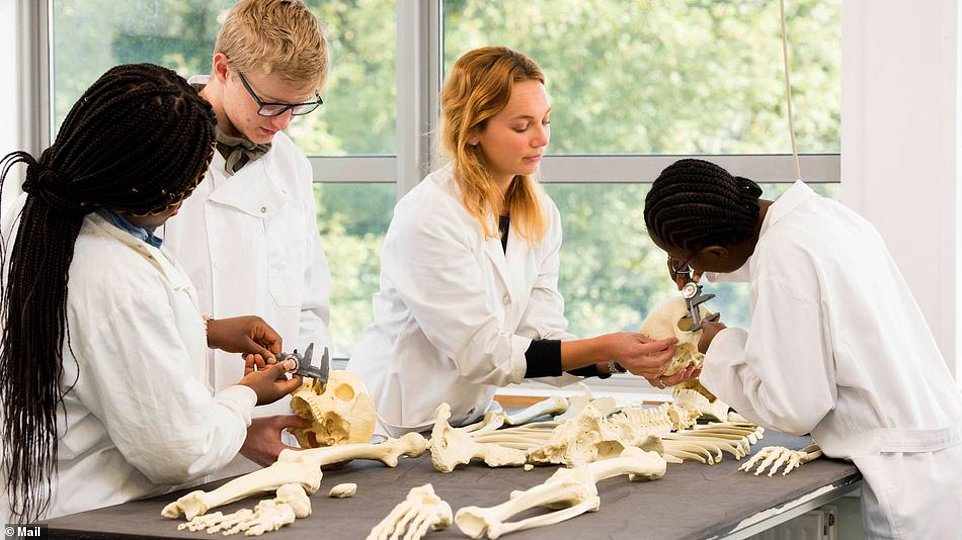
Overview
The University of Central Lancashire (UCLan) is one of the most socially inclusive and progressive universities in the UK. Extensive outreach work, contextual offers and well-structured academic and financial support packages help bring higher education within reach of many who would otherwise miss out. It has high ambitions for its near-30,000 undergraduate and postgraduate students, and it is the only non-Russell Group university to have medical schools for both humans and animals, having admitted its first student vets last September. UCLan’s medical school is one of four piloting the new medical doctor degree apprenticeships from this month. The university is headquartered in Preston, with further (and expanding) campuses in Burnley and Westlakes in Cumbria. The latter offers a range of medicine and nursing courses and is home to the National Centre for Remote and Rural Medicine, which trains clinicians in all aspects of medicine relating to rural environments. Virtually all students come from non-selective state schools, and more than half are the first in their immediate family to go to university.
Goldsmiths, University of London
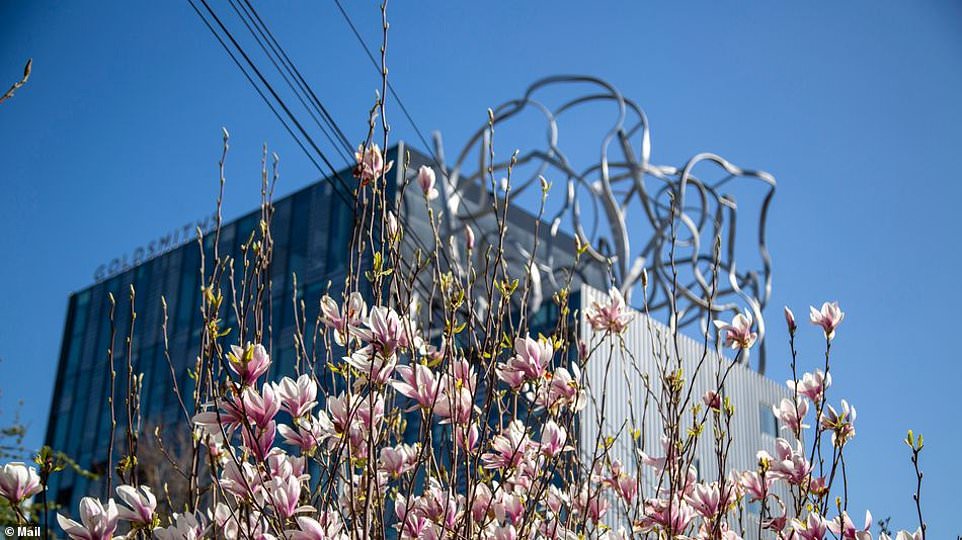
Overview
Goldsmiths finds itself in the eye of the storm that is blowing through higher education as universities struggle to balance the books. Applications and admissions last September hit their lowest point in the past decade, starkly illustrating the problems that the university is facing. Proposed compulsory redundancies were averted in August only when 67 staff agreed to leave voluntarily following a cash squeeze prompted by falling student numbers and the long-term freeze of UK tuition fees. Unions and students alike are disturbed by the university’s Transformation Programme, drawn up in response to what Professor Frances Corner, Goldsmiths’ warden, describes as a ‘really serious’ financial position. All of which threatens to overshadow Goldsmiths’ reputation as a home of creatives and free-thinkers, drawn to its trendy New Cross campus by its standing in the arts, humanities and social sciences. Mary Quant, Steve McQueen, Lucian Freud, Edward Enninful and Damien Hirst are among a host of illustrious creative alumni. The college offers a full suite of courses in the creative and performing arts, as well as degrees that embrace economics, politics, law, computing, artificial intelligence and management. Two-thirds of the domestic intake come from the capital and a third of the undergraduate population are international students.
University of the West of Scotland
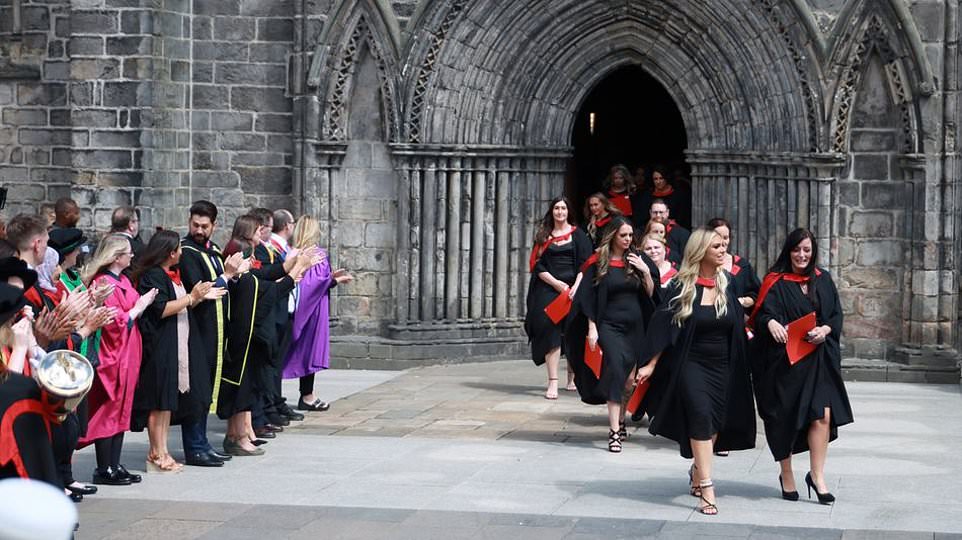
Overview
For the eighth consecutive year, the University of the West of Scotland (UWS) has recruited a greater proportion of students from disadvantaged backgrounds than any other Scottish institution, according to a report from the Scottish Funding Council which looked at the university destinations of students from the 20% of Scottish postcodes considered to be the most deprived. As the university told us: ‘At UWS ability, not background, matters.’ The latest Times Higher Education Impact Rankings placed UWS second in Scotland (behind the University of Glasgow) and 16th in the world for reducing inequalities, providing further recognition of the university’s game-changing approach. The 99% Scottish intake at UWS is among the most diverse anywhere in the UK, with almost half being from homes where parents did not attend university, and all being educated in state schools. Work-focused degrees are offered across four campuses in south-west Scotland, with the biggest of them in Paisley, Scotland’s largest town, where 10,000 students are based. Further outposts in Ayr, Dumfries and Hamilton (known as the Lanarkshire campus) have seen heavy investment recently. There is a new campus in London’s Docklands, too, offering international business, collaborative health and social care, and professional health studies undergraduate degrees.
Queen Margaret University, Edinburgh

Overview
Small is beautiful at Queen Margaret University (QMU). Located on a modern campus opened just 17 years ago, QMU is the best of both worlds, sitting just six minutes by train from the centre of Edinburgh, while offering students green, coastal surroundings with a great sense of space. QMU is home to around 4,000 undergraduates (and 2,500 postgraduates) following a range of career-focused degrees. Work placements are a common feature of courses, and the university prides itself on producing career-ready graduates. There is a strong provision of healthcare and teaching courses, with recent campus developments such as the newly opened outdoor learning hub adding considerably to the facilities for the latter. QMU serves a socially diverse student community where around half are the first in their immediate family to attend university. Its contextual admissions scheme typically reduces offers by two grades compared to the standard ask. The university’s reputation for friendliness was reinforced by its recent nomination by students for four prizes at the Global Student Living Awards, covering best university housing, best student wellbeing, best moving-in experience and best student community in the UK and Ireland.
Bournemouth University
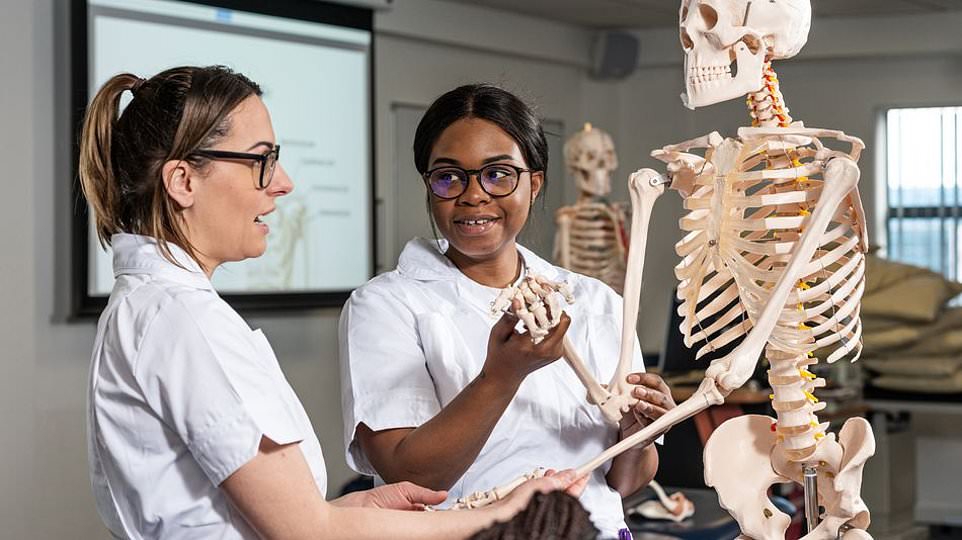
Overview
Bournemouth is a popular choice with applicants, who are drawn to both the coastal location and the fact that it punches well above its weight in the graduate employment stakes. It ranks among the top 20 modern universities for the proportion of graduates securing high-skilled employment. All students have the opportunity to undertake a work placement, with plenty meeting their future employer this way, and many courses are accredited by professional bodies. The university’s strengths include film, television and the media, with the National Centre for Computer Animation producing a succession of graduates who have gone on to work in production companies. There are two main campuses – Talbot, which is home to the faculty of media and communication, the faculty of science and technology and the business school; and Lansdowne, which houses the faculty of health and social sciences. Bournemouth boasts a lively nightlife thanks to the town’s two universities, and seven miles of stunning beach provide ample distraction when exams are over.
Anglia Ruskin University

Overview
A merger between Anglia Ruskin University (ARU) and the former Writtle University College, on the outskirts of Chelmsford, Essex, was completed earlier this year. ARU Writtle, as it is now known, is renowned for its agriculture, horticulture, animal and environmental courses but had been operating in deficit. Following the opening of ARU Peterborough in 2022, ARU now has a truly regional footprint. Headquarters are on the main campus in Chelmsford and there is a further campus in Cambridge, which traces its origins back to the Cambridge School of Art, opened by patron John Ruskin in 1858. It recruits more than 60% of its students from within East Anglia (a region with few universities), who sign up to courses with key work skills embedded into the curriculum. It is the largest provider of nursing, midwifery and health and social care courses in England. The university will hope that the 21% tumble in applications for September 2023 – and a corresponding 11% drop in admissions – was just a blip given the recent expansion.
Bishop Grosseteste University

Overview
Students like Bishop Grosseteste. They consistently put the institution close to the top of the annual National Student Survey as they have done this year. The university also finished top of the 2023 Whatuni Student Choice awards for both student support and accommodation. It is one of the smallest universities in the country, with just 540 students admitted via Ucas last year, which possibly explains the high levels of satisfaction. Students are not simply a number here. However, applications for admission in September 2023 tumbled by 22% compared with the 2022 admissions cycle to their lowest level in the past decade. The proposed name change to Lincoln Bishop University, which has been submitted to the Office for Students for approval, could help stem the decline in applications simply by putting the university’s location in its title. Bishop Grosseteste, or Bishop G, as it is affectionately known, started life in 1862 as a small Anglican teacher training college for women. There are now 43 degree choices (many with foundation year options) in addition to 10 teacher training programmes. Bishop G has enjoyed full university status since 2012. The campus mixes Victorian and modern architecture, with teaching, library and social facilities cheek by jowl.
University of Cumbria
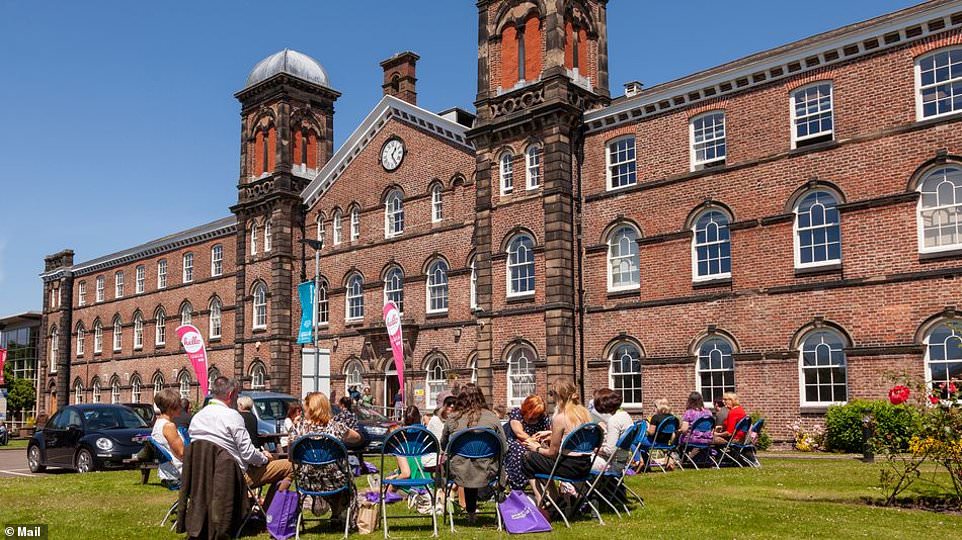
Overview
Cumbria is planning for a vibrant future with two new campuses in the offing and the opening of a graduate-entry medical school in Carlisle scheduled for next September. In the North West, there are two campuses in Carlisle (where a new flagship is planned) and further outposts in Lancaster, Ambleside and Workington, while another is due to open in Barrow-in-Furness next January. It even stretches down to London, where it runs a number of education and health programmes and a global business management top-up degree. Applications and admissions fell again in 2023, and they are both roughly at half the level they were a decade ago, after years of steady decline. However, it is hoped the new campuses and subjects offered will see student numbers start to grow. It supplies large numbers of students to the public sector, with healthcare and teacher training at the fore. The unique Ambleside campus, in the heart of the Lake District, offers courses tailored to its location, including marine and freshwater conservation; forest management; outdoor leadership; tourism management; and woodland ecology and conservation.
University of the Arts London

Overview
Six globally renowned colleges make up the University of the Arts London (UAL): Central Saint Martins, London College of Fashion, Camberwell College of Arts, Chelsea College of Arts, Wimbledon College of Arts and London College of Communication. They came together to form UAL in 2004 but retain their distinct subject specialisms. There has been huge investment in the university’s estate in the past decade, and places are at a premium – this is not just the most prized arts university in the UK, but one of the most popular in the world. About 35% of last year’s intake came from overseas. For a second successive year, UAL received more than 33,000 applications for courses beginning in September 2023, putting it ahead of most British universities. Its list of alumni reads like a who’s who of the creative industries, from illustrator Sir Quentin Blake to singer Florence Welch, of Florence and the Machine. More than half of the Turner Prize winners are UAL alumni, and the end-of-year shows are a recruiting ground for anyone seeking the brightest new creatives.
Kingston University

Overview
Based in south-west London, Kingston University has seen a nearly 50% rise in applications since 2019. With its campuses, halls, facilities and course portfolio constantly evolving, the university is successfully attracting a significant number of prospective students. More than half of the student body is made up of first-generation students and an even greater proportion hail from ethnic minority backgrounds – both traditionally under-represented on campus. A modern university in all senses of the word, Kingston targets these groups throughout their earlier years of education and then provides ongoing support once they enrol, with dedicated careers programmes for ethnic minority students, for example. The system works – Kingston was awarded a coveted triple gold in last year’s Teaching Excellence Framework, covering an overall rating, student experience and student outcomes. The university’s main Penrhyn Road campus is undergoing refurbishment, with work expected to finish in mid-2025, and there has been a cool £55m investment in halls of residence to provide 1,330 energy efficient, state-of-the-art bedrooms. The university attracts primarily local students from surrounding London boroughs, with the South East region more widely also well-represented.
University of Chichester

Overview
The University of Chichester may be one of the smallest institutions in this guide, but what it lacks in numbers, it makes up for with an abundance of character. The university is situated across two sites on the south coast, one in Chichester and the other in Bognor Regis. When established in 1839, Chichester was primarily a teacher training college, and the modern-day university retains a powerful presence in this field. Both primary and secondary teacher training secured a rare double of outstanding ratings from Ofsted, with the inspectors praising the university’s ‘superbly designed curriculum that is brought to life by high-quality teaching, mentoring and guidance’. The university also has a strong portfolio of arts, performing arts, healthcare and sport-related degrees. Applications were slightly down last year, but Chichester scores well on student support metrics. Roughly two-thirds of its intake come from the South East, and the university is pursuing growth in its provision of degree apprenticeship programmes.
Birmingham Newman University

Overview
Applications to Birmingham Newman hit a record high for admission last September, the same month as the institution changed its name to Birmingham Newman University. Bolting to its title the name of the city in which the university sits is designed to heighten awareness of its location to those considering it from outside the West Midlands. Currently five in every six students come from the West Midlands, attracted by its reputation for offering something a little different to the degree-factory norm. The university sums up this difference as ‘a traditional ethos. A modern approach. A sense of belonging’. The university promises an interactive learning experience rather than the traditional one of large lectures and note-taking. With around 2,000 undergraduates, Newman provides a more personal university experience. Its scores in the National Student Survey are consistently some of the highest in the country. Its student intake is among the most diverse, with half of the students drawn from ethnic minorities and nearly 70% the first in their immediate family to go to university. The campus is located in a quiet residential area on the southwestern edge of Birmingham, overlooking the Worcestershire countryside.
University of Worcester
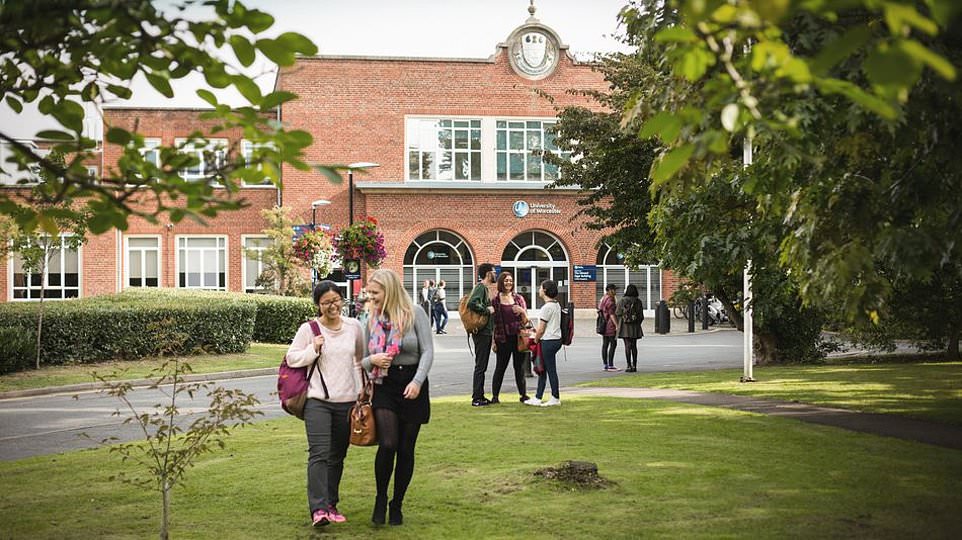
Overview
The awarding of at least 50 government-funded places for British students on the graduate entry medicine degree at the new Three Counties Medical School is a considerable milestone for the University of Worcester. It will help address long-term shortages of doctors in the three counties from which the medical school takes its name (Worcestershire, Herefordshire and Gloucestershire), as well as the Black Country borough of Dudley. The medical school is located on Worcester’s Severn campus for health, wellbeing and inclusive sport, which has been the scene of most of the university’s recent expansion. At the heart of the university’s excellent sports provision is the Worcester Arena, also at the Severn campus, which hosts the likes of wheelchair basketball. The university has four sites in the pretty cathedral city of Worcester and recruits heavily from the immediate area, with three-quarters of students hailing from the West Midlands. More than half of its intake come from homes where neither parent went to university, and it was recently shortlisted for University of the Year in the UK Social Mobility Awards for the third time in six years. Worcester is a key supplier of graduates into the public sector, with teaching, nursing and health and social care to the fore, and about three-quarters of graduates are in high-skilled jobs within 15 months of leaving.
Canterbury Christ Church University

Overview
The first students will graduate from the Kent and Medway medical school next summer, five years after the collaborative venture between Canterbury Christ Church University (CCCU) and the University of Kent opened. It’s a significant moment for an institution founded in 1962 as a teacher training college, which today has an outstanding record for widening participation in higher education. It recruits nearly two thirds of its students from the South East, most of them from the immediate environs of the university, which include some of the most deprived areas in southern England. The university has one of the highest numbers of first-generation students. Graduate employability is one of CCCU’s strongest areas in our ranking; industry and local businesses work in partnership with the university to ensure courses are relevant to current workplace needs. It is hoped that the new £65m Verena Holmes Building for STEM subjects (science, technology, engineering and maths), named after one of the country’s foremost female engineers, will boost the number of women in STEM, too.
Birmingham City University

Overview
The past two years have seen more applications for places at Birmingham City University (BCU) than ever before. This bustling, uber-urban institution is one of the country’s larger universities, with more than 22,000 undergraduates spread across several sites in central Birmingham. A rolling programme of investment has upgraded many buildings and departments. Over the summer, BCU completed its move to the Alexander Stadium, which hosted the 2022 Commonwealth Games and will now be home to the university’s sports provision. The new facilities are just the latest to benefit BCU students. The City Centre campus, near to the new HS2 station, sits within an Investment Zone, which will pave the way for future developments. The university is home to the Royal Birmingham Conservatoire and the School of Jewellery, which is the largest in Europe. With 70% of students coming from the West Midlands – and many of them living at home – the relatively small number of university-owned student rooms (2,746) is not the problem it might be.
Leeds Beckett University
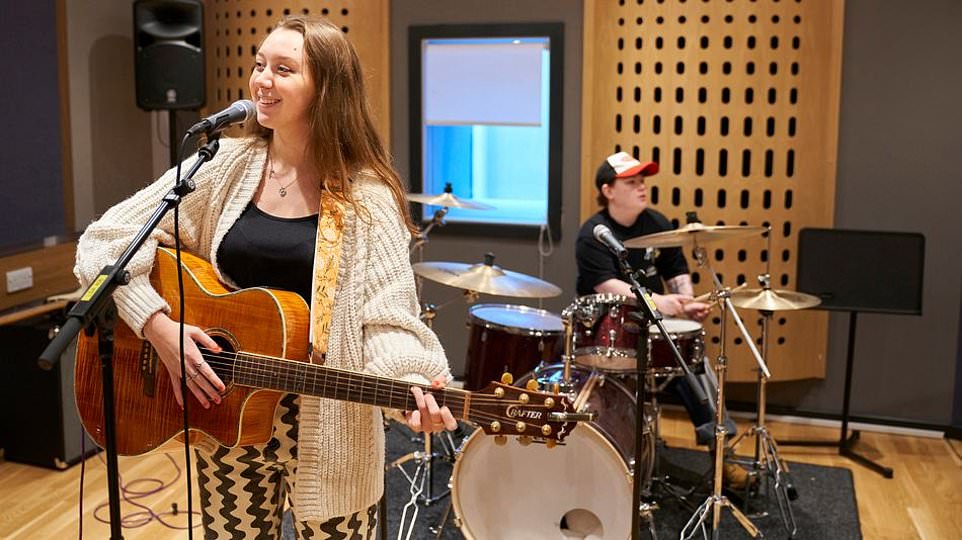
Overview
In key areas of provision, Leeds Beckett offers students outstanding new facilities. Education, law, sport, nursing and health sciences have all seen significant recent investment. Students here are a happy bunch, returning scores in the National Student Survey that are considerably better than its neighbour, the University of Leeds. Student experience, which earned a silver, was the highest-rated aspect in the latest results of the Teaching Excellence Framework. However, the university earned disappointing bronze awards for both its overall rating and for student outcomes. As well as its main city centre campus, Leeds Beckett has a second site in Headingley, which is home to teacher training and sport – two of the areas for which Leeds Beckett is best known. Around half the intake are recruited locally from Yorkshire and the Humber, with 45% coming from homes where parents or carers did not go to university. Leeds Beckett works hard to admit a high proportion of students from backgrounds traditionally under-represented on campus, with its access and widening participation team working with around 10,000 young people in more than 150 schools and colleges each year.
University of East London
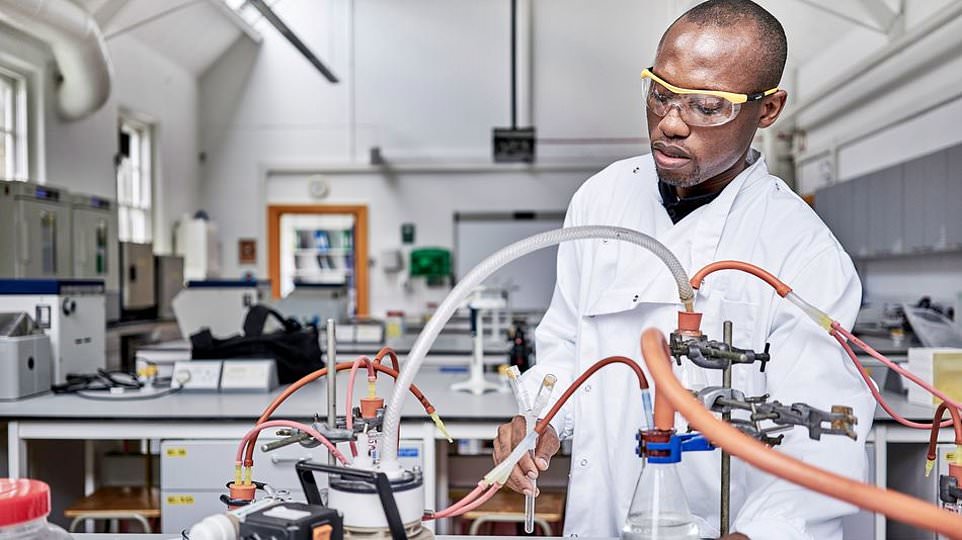
Overview
A significant makeover of the estate at the University of East London (UEL) is under way as part of the institution’s Vision 2028 development strategy. This aims to reinvent UEL through increased collaboration with industry partners, equipping students with more of the skills employers need and empowering them to achieve career success. This is being steadily rolled out for one of the most socially inclusive student populations in any university. UEL occupies several sites, principally the Docklands campus overlooking the historic Royal Docks and the new University Square Stratford, home to UEL’s Institute of Performing Arts. A further older (but soon to be redeveloped) campus, also in Stratford, is home to the school of education and communities, where most teacher training takes place. There are six academic schools in total, all offering job-focused courses which employers have helped design. UEL is one of only 10 universities to be given the University Mental Health Charter Award by the charity Student Minds, which recognises excellent practice in mental health and wellbeing.
University of South Wales

Overview
If you’ve got a good business idea, then the University of South Wales (USW) could be the place for you. It justifiably lays claim to the title of Entrepreneurial University of Wales for the fourth year in a row, in recognition of it being the Welsh university that has backed the most graduate start-up businesses. Official data from the Higher Education Statistics Agency shows that USW supported 96 new graduate businesses in 2022-23, taking the total number of active graduate businesses it has helped to more than 500. Across the UK as a whole, USW ranks 11th out of 220 institutions for new start-ups and ninth for the number of active graduate businesses. Dr Ben Calvert, USW’s vice-chancellor, said ‘supporting start-ups and small businesses is part of our DNA’. Entrepreneurial success is no accident at a university where courses are designed and delivered with significant input from business and industry. Engagement, collaboration and partnership are the cornerstones on which the institution is founded. It has five sites across South Wales: three in Pontypridd, and two others in Cardiff and Newport. The university is headquartered on the Treforest campus, the biggest of the Pontypridd sites. Cardiff is home to the university’s creative industries courses, while Newport provides education and teacher training, business, computing, social work and psychology degrees. Everything else is taught in Pontypridd.
De Montfort University

Overview
One of the larger modern universities, with 21,500 undergraduates, admissions for De Montfort University (DMU) climbed to close to 6,500 last September even as applications fell to their lowest level in a decade. The university takes a holistic view of the student experience, and it is rolling out block teaching across its courses to enhance this. Students are taught one module at a time, as opposed to the more traditional approach of taking a number of them simultaneously. They are examined at the end of each seven-week block of teaching, studying two modules consecutively per term, and four per academic year. ‘Teaching designed around you’ is the marketing pitch DMU deploys for this approach – and it seems to work, with 92% of students saying that working on one module at a time helps their work-life balance. The university sits on a compact campus in the centre of Leicester, one of the UK’s most diverse cities, and attracts half of its UK students from the East Midlands. International students make up around one third of undergraduates overall, further adding to the cosmopolitan feel.
Middlesex University

Overview
Middlesex is one of the larger universities in this guide, with around 20,000 undergraduate and postgraduate students, but it offers a commendable level of bespoke education tailored to the individual. ‘To address the needs of our diverse student body, and recognising that many are working or caring for family in parallel with their studies, we offer blended learning options for our students where this is appropriate and feasible,’ the university told us. So, while courses are primarily delivered in person, the university tweaks delivery to suit individual circumstances where possible. This flexibility is backed up by the extensive personal and financial support offered to give students the best chance of success. Recruiting largely from within the capital, Middlesex has one of the most ethnically diverse student populations with just under three-quarters coming from an ethnic minority. Black students are the largest ethnic group on campus, accounting for more than 35% of last year’s intake. Middlesex is based on a single campus in Hendon, north London, and provides many vocational courses devised in partnership with business and industry. Applications are 45% down on where they were in 2016, but admissions stabilised last September with just under 3,000 new starters.
Norwich University of the Arts

Overview
Norwich University of the Arts, our Arts University of the Year, is the highest-ranked specialist arts university outside of London. A real-world focus runs through all of its courses alongside fostering the creativity you would expect. Norwich’s pedigree was confirmed by its recent triple gold award under the Teaching Excellence Framework, covering an overall rating, student experience and student outcomes. Norwich is the only specialist arts and design university to achieve this feat. Based on a city centre campus, the university occupies 12 buildings in Norwich’s cultural quarter which are equipped with the latest modern technology, art studios and workshops. A compact programme of 27 undergraduate degrees covers the performing arts (acting), visual arts (animation, illustration, photography and fine art), televisual arts (film and moving image production, animation and visual effects), design (design for publishing, games art and design, graphic design, interior design, textile design and user experience design) and fashion (fashion communication and promotion, fashion marketing and business, and fashion). Courses involving creative computational technology, such as creative computing, creative technology and robotics, and user experience design – all serving a jobs market starved of suitably qualified graduates – will ensure Norwich continues to punch above its weight in the employment stakes.
University of Bolton
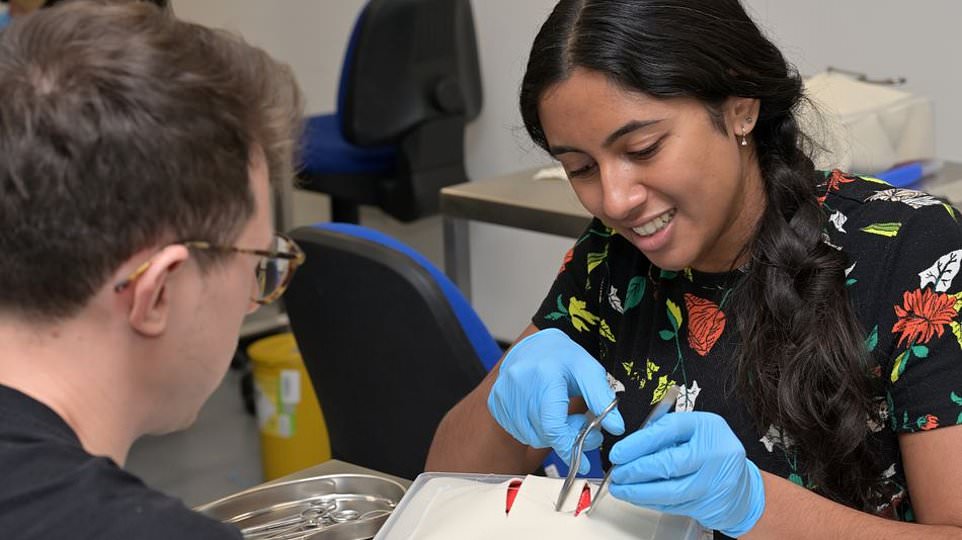
Overview
#UniAsItShouldBe is the latest marketing handle for Bolton, one of the most socially inclusive and accessible universities in the country. Perhaps with an eye to the university experience of many during the pandemic, the marketeers are pushing Bolton as somewhere that delivers a great experience for students as well as preparing them for working life. It is a fraction of the size of its big-city neighbours – Manchester, Manchester Met and Salford – with fewer than 8,000 undergraduates, nearly 80% of whom are drawn from the immediate area and the north-west more widely. Applications and admissions both fell sharply during the 2023 entry cycle but applications are still well above pre-pandemic levels. It performs consistently well in the annual National Student Survey, and scored a silver overall in the most recent Teaching Excellence Framework, with the student experience earning gold. It gained a bronze rating for student outcomes, in part due to one of the highest dropout rates of any university. However, Bolton gives many the chance of a higher education that they would not get elsewhere.
Wrexham University
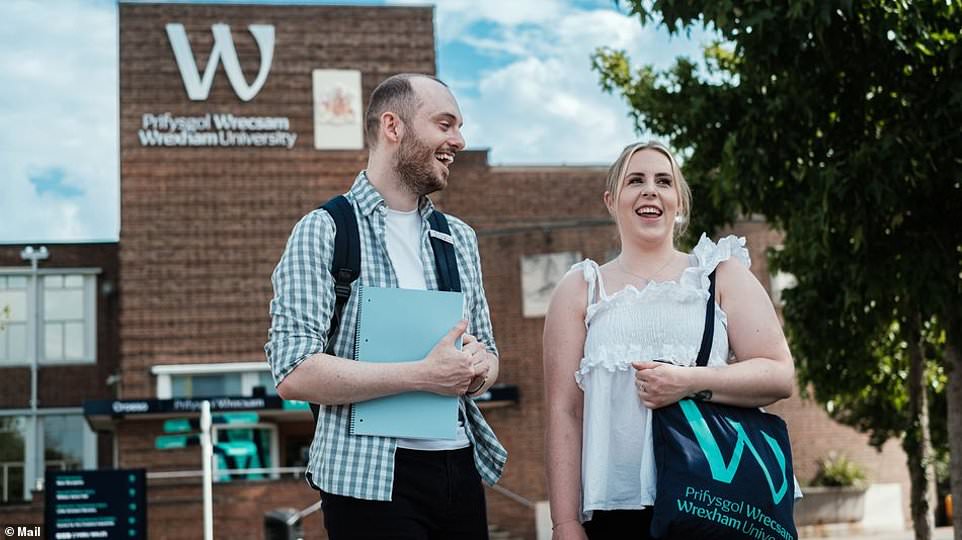
Overview
Owain Glyndwr, the warrior leader who briefly established an independent Welsh state in the Middle Ages, has disappeared from the name of Wrexham University in what vice-chancellor Professor Maria Hinfelaar described as a ‘momentous and exciting step’. The name change from Wrexham Glyndwr University was actioned last September in order to identify the university more closely with the newest city in Wales, which has had more than its share of headlines since Hollywood stars Ryan Reynolds and Rob McElhenney bought its football club in 2020. The club has enjoyed successive promotions and begins this year in League One for the first time in 20 years – the sort of ranking improvement that the university would also love to see. (This year’s 16-place improvement in our league table is a good start.) All the positive publicity might have rubbed off on the institution, with applications hitting record levels over the past two years. Students enjoy their experience here, with consistently excellent scores being recorded in the National Student Survey. An £80m campus investment programme is well under way, and a new healthcare simulation centre opened last year for Wrexham’s substantial number of nursing and allied health students.
University of Roehampton
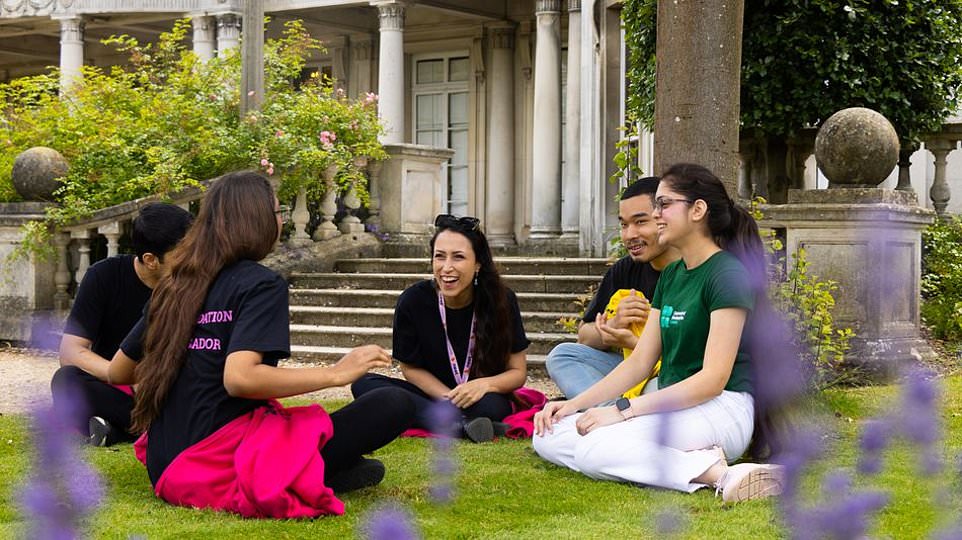
Overview
Roehampton is moving heavily into the provision of online degrees for those who do not want to study on its attractive parkland campus in south-west London. For now, the nine courses on offer are all postgraduate business degrees, but the university is moving quickly to adopt more options with 100% online studying. The move comes as enrolments dropped to their lowest point in the past decade, 43% below the level they were at in 2016. Once part of the University of Surrey, it is 20 years since Roehampton became a university in its own right. It is organised into four colleges, Digby Stuart, Froebel, Southlands and Whitelands, which were founded as teacher training colleges in the 19th century, and teacher training is still a central pillar here. The colleges create bite-size communities of students and help Roehampton provide a far more personal university experience than is available elsewhere in the capital. The university, which has an excellent reputation for social diversity on campus, also has a sizeable population of nursing and healthcare students and is expanding into green skills with its new Sustainable Engineering and Technology Education Centre and a raft of associated courses.
Bath Spa University

Overview
A university rebrand aims to dispel the perception that creative arts universities, such as Bath Spa, lack the hard edge needed to produce graduates who achieve well when they leave. ‘Professional creativity’ is the new byword for this university. As vice-chancellor Professor Sue Rigby put it: ‘Creativity is our human superpower’, and with admissions last September up by 1.5% to a new high, Bath Spa seems to be avoiding the kryptonite. Business, computing, teacher training and some science offerings are available alongside the liberal arts degrees. In addition to its three principal sites in and just outside of Bath, there is a new BSU London campus, in fashionable Hoxton, which hosts several BAs in business and management, as well as a BSc in health and social care management. The university is headquartered at Newton Park, four miles outside of Bath, with its grounds landscaped by Capability Brown. Those studying art and design are located at the Locksbrook campus in the city centre, while the textile courses are based at Sion Hill, in the Lansdown district.
University of Westminster

Overview
Based on the proportion of former students who go from receiving free school meals to being among the top 20% of earners by the age of 30, Westminster ranks second in England for social mobility. The verdict came from the Institute for Fiscal Studies and education charity the Sutton Trust, and highlights how central social inclusion is to Westminster’s mission: 73% of students come from ethnic minorities, 56% are the first in their immediate family to go to university and 96% are educated in non-selective state schools. The university, based on four campuses – Cavendish, Regent and Marylebone in central London, and Harrow a little further out – has enjoyed record enrolments in the past two years, with applications at their highest since 2015. Three-quarters of the home intake are Londoners, but one quarter of undergraduates come from overseas, making student life here as cosmopolitan as the capital itself. Preparing students for employment is a thread that runs through all courses, which include experiential learning in the first and second years. There are mandatory short-term placements or work-related projects, as well as optional year-long experiences. The university is working to embed virtual internships into courses to ensure equality of access, too.
University of Buckingham

Overview
Buckingham is the only independent university in this guide and it pioneered two-year degrees long ago as a more efficient way of delivering higher education. The cost of a two-year degree here is now the same as a three-year course in the state sector, but the saving of a year of living costs still makes going private a cheaper option. The quid pro quo is that students have to work harder – the academic year is divided into four terms with much shorter breaks between them. The numbers of applications and admissions at the university, which recently marked 40 years of Royal Charter status, have never been higher. However, it remains one of the smallest universities in this guide, with around 3,500 students. Fewer than half of these are undergraduates. Around 50% of the students come from overseas, giving the campus a cosmopolitan feel, but numbers of UK students are increasing. All courses will soon be taught in Buckingham, following the decision to close the university’s costly campus for medicine and health sciences students in Crewe, Cheshire by 2026.
University of Bedfordshire
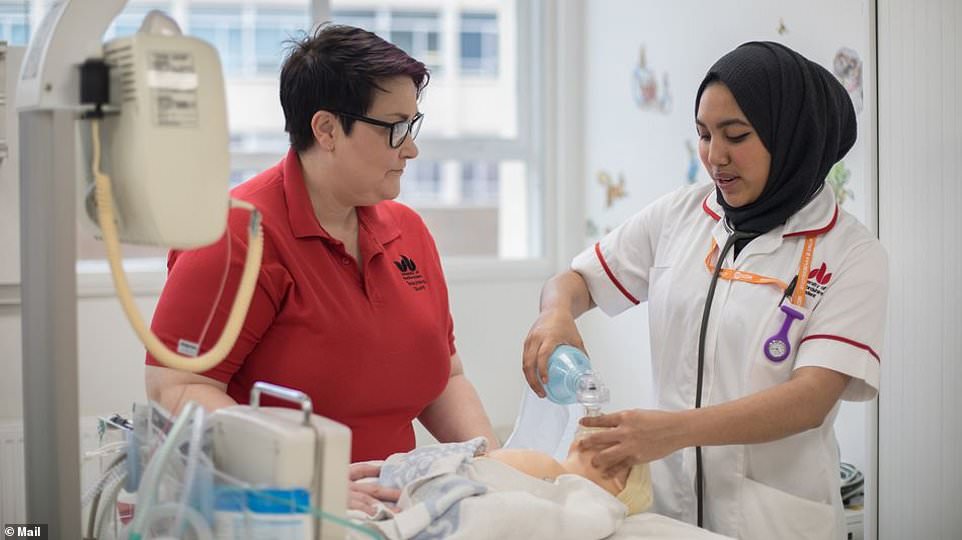
Overview
One of the champions of widening participation, Bedfordshire has experienced a sharp downturn in applications in recent times, with the near 8,000 who applied in the 2023 admissions cycle being around half the number that sought a place here a decade ago (and 18% down on 2022). It has invested heavily in student facilities, however, with a medical simulation suite one of the latest projects to come to fruition. The Luton-headquartered university is popular with students, scoring well consistently for teaching quality in the annual National Student Survey, but it was awarded the lowest bronze award overall and for student outcomes in the latest regulatory Teaching Excellence Framework. It did earn a silver for student experience, however. An extensive network of student support structures is in place due to the fact that its intake is made up largely of those from non-traditional backgrounds, although this is not enough to prevent around one in five students dropping out during their first year. The vast majority of students are drawn from the immediate area or from the South East, East Anglia and London.
Buckinghamshire New University
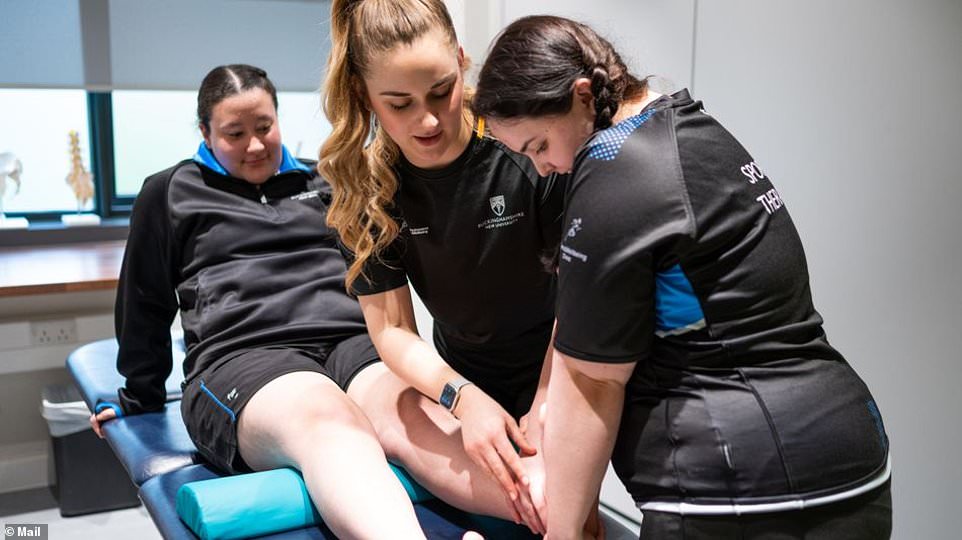
Overview
Buckinghamshire New University (BNU) won our University of the Year for Student Support in our last edition, in recognition of the exceptional efforts it makes to provide a positive experience for its students. It has minimised many of the hidden costs of university and provided innovative support structures. In turn, students reward it with high scores for teaching quality, support and experience in the National Student Survey. Record numbers of applications and admissions in 2023 were roughly double their pre-pandemic levels. Headquartered in High Wycombe, the university has further outposts for healthcare courses in Uxbridge, and work-related programmes in Aylesbury. For students with stars in their eyes, it also runs 15 courses from Pinewood Studios, including film production, animation and visual effects. More than half of students are the first in their immediate family to go to university, and it also has the second-highest proportion of students in any English university doing degree and higher-level apprenticeships, accounting for 16% of all learners. It has links with major employers, including Sky, British Airways, Transport for London and multiple NHS trusts and local authorities, too.
Liverpool Hope University
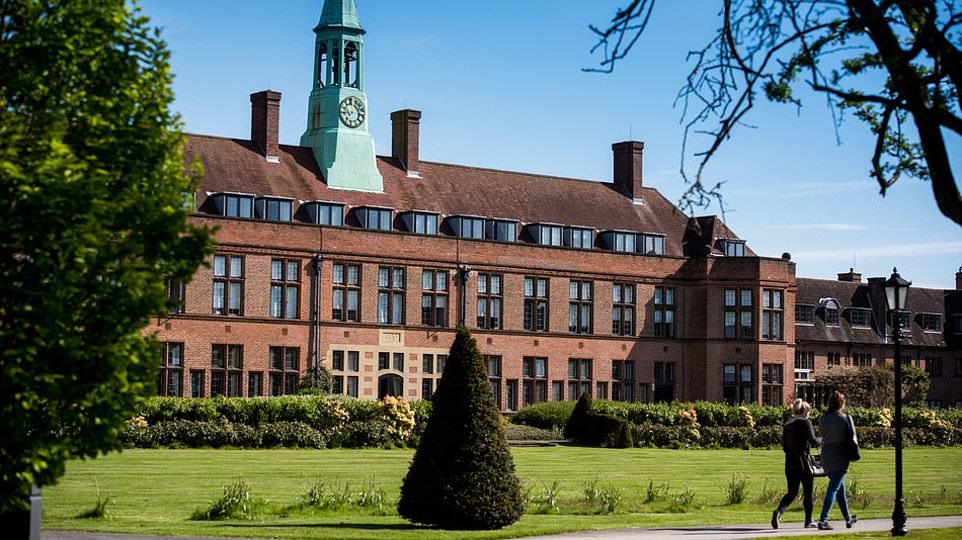
Overview
The smallest of the three Merseyside universities, Liverpool Hope has seen a 35% rise in applications over the past ten years. Its undergraduate population is under 4,400, and this gives Hope the scope to implement a modern, student-focused approach to university education. Hope believes small teaching groups allied with strong student support services allow it to provide a personal education, ensuring that nobody gets lost in the crowd. Hope scores particularly well for student support in the National Student Survey, with student experience not far behind. The university is constantly evolving its degree portfolio and has recently added 16 new programmes to its roster. A range of courses will be delivered in the university’s new multi-million-pound i3 building which is set to open on its main Hope Park campus this year. The campus sits just four miles from Liverpool’s bustling city centre, where a second base – Hope’s Creative Campus – can be found. Aigburth Park is the university’s purely residential campus and is just a 20-minute bus journey away from the city centre.
Arts University Bournemouth

Overview
This creative community of 3,500 undergraduates on the south coast is one of five specialist arts universities that we rank in this guide. Dedicated to arts, design and media, Arts University Bournemouth (AUB) offers 28 degrees – seven introduced this month – and three foundation degrees to a largely southern clientele, with 80% of students drawn from London, the south-east and the south-west. Sharing one of Britain’s sunniest seaside resorts with the much larger Bournemouth University (which has a campus next door) has its advantages in terms of guaranteeing an active student nightlife and making the area a student-centric destination. After two years of applications and admissions at record levels, applications for entry in September 2023 fell by 24%, and the university took the unpopular decision to close its BA in dance. The opening this month of the school of arts, media and creative industries management will draw an influx of students to its raft of new courses. Bournemouth Film School is the largest outside of London, and the Crab drawing studio – designed by AUB alumnus Professor Sir Peter Cook – is the first such facility to be built in an art school in more than a century.
University of Gloucestershire

Overview
Split between the city of Gloucester and the Regency town of Cheltenham, the University of Gloucestershire has continued its investment in key spaces. With cutting-edge facilities set to open in September 2025, Gloucestershire’s Institute of Education and programmes including social work and psychology will soon be based in the former Debenhams building in the heart of Gloucester city centre. The university’s Park campus in Cheltenham is also set to be revitalised this year, with a £5.8m project under way. These advances, alongside growth in computing-related subjects and active encouragement for students to engage with artificial intelligence (AI), marry up nicely with Gloucestershire’s links with local, cyber-based employers such as GCHQ, Intel and IBM. Despite this focus on all things technological, the university retains a strong programme of arts, humanities and teaching courses. The university draws more than half of its admissions from the surrounding South West region, and a similar proportion are first-generation students in an intake that is overwhelmingly educated in the state sector.
University of Winchester
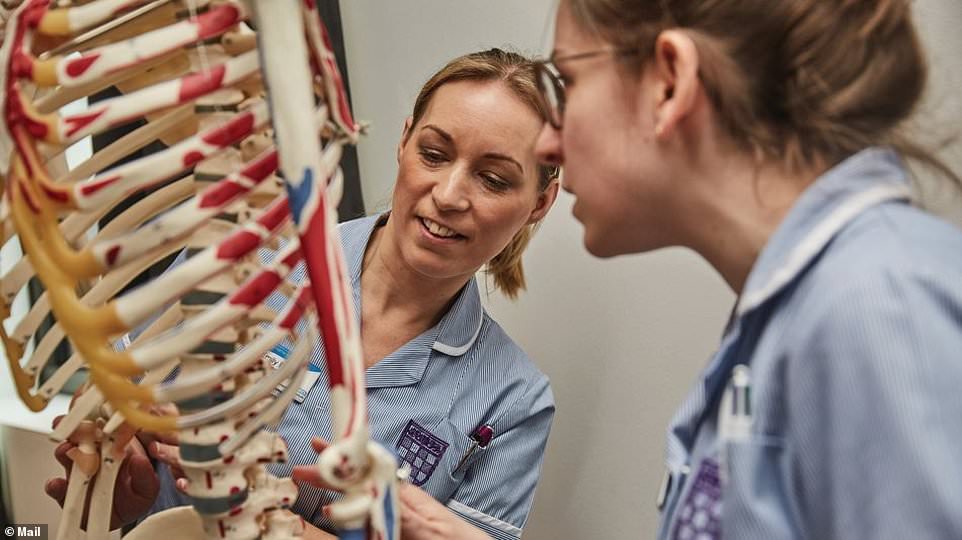
Overview
The four years since the opening of the West Downs Centre – a sustainable development that acts as a gateway to both the city of Winchester and its university – have seen the highest number of applications in the university’s history. This game-changing development is home to the faculty of business and digital technologies. The university has come a long way from its foundation more than 180 years ago as a teacher training college, although teacher training remains a key component of its 21st-century offering. An overall silver in the latest Teaching Excellence Framework assessments was accompanied by praise for outstanding student support and the embedding of employability skills into the curriculum. Alongside teachers, Winchester turns out large numbers of graduates into nursing, social work and many other health and public service professions. The King Alfred Quarter, the university’s main campus, is a short walk from both the West Downs campus and the pretty centre of this prosperous cathedral city. The campus contains an attractive mix of old and new buildings and houses many departments, the social hub, the library and the Queens Road and Burma Road student villages.
University of Northampton

Overview
Housed on a new campus close to the town centre, all students at Northampton get a free laptop when they enrol or a £500 accommodation discount or a £500 catering credit. There is further bursary support worth £400 a year in subsequent years of study for students from homes with a household income of £25,000 or less. The universal bursary package reflects the demographic here, which is predominantly students drawn from groups that are traditionally under-represented at university. This kind of support makes a real difference. More than half of the intake are from families where parents did not attend university and half are ethnic minority students, with black students alone making up one third of last year’s entrants. It was the first UK university to be designated a Changemaker Campus in 2012, in recognition of its efforts tackling social injustice and changing the world through supporting innovation and enterprise. Alongside their degree, students can earn a Changemaker certificate which rewards volunteering or paid community work as well as developing and delivering a new project to create a positive social impact. Last year’s Teaching Excellence Framework assessments saw the university downgraded from gold to silver, although it achieved this mark in overall rating, student experience and student outcomes.
University for the Creative Arts

Overview
One of five specialist arts institutions included in this guide, the University for the Creative Arts (UCA) is one of the largest, and has a strong regional footprint thanks to its campuses in Canterbury, Epsom and Farnham. The three campuses, set in small towns and cities, lend themselves to creating compact, supportive academic communities, with good bonds between students and staff. There is a further facility at Maidstone Studios for those studying television production. More than 7,500 undergraduates are enrolled on degree programmes spanning the creative industries, including acting, fashion atelier and tailoring, automotive and transport design, games development, jewellery and silversmithing and journalism and communications. The portfolio is expanding to include studio practice (product and furniture design) from this month, with body art (histories, cultures and practices) and fashion (millinery, accessories and shoe design) taking their first students in September 2025. Whether you want to be a tattoo artist or a tailor, UCA has it covered, with graduates inspired by forebears who include Dame Zandra Rhodes, Karen Millen, Dame Tracey Emin and Stephen Webster.
University of Wales Trinity St David
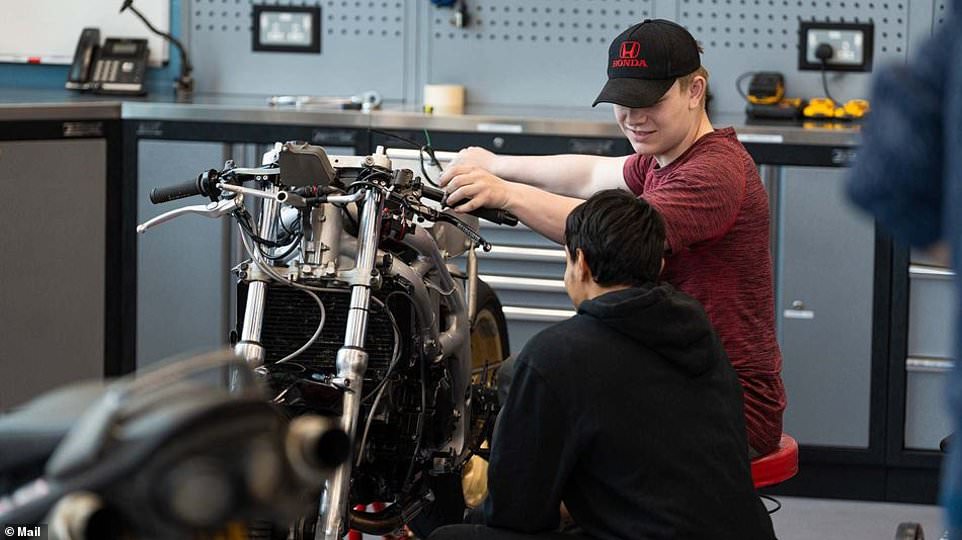
Overview
The oldest university in Wales is also the one to have undergone the most significant transformation in the past 15 years. The University of Wales Trinity St David (UWTSD) began life in 1822 as St David’s College in Lampeter; only Oxford and Cambridge have a longer history among Welsh and English universities. It now comprises campuses in Lampeter, Carmarthen and Swansea (the former Swansea Metropolitan University until 2013) and has also expanded its footprint to cover London (opened in 2012), Cardiff (2015) and Birmingham (2018). However, UWTSD’s heart remains in south-west Wales, where each of the campuses has a distinct course bias and atmosphere. The historic and beautiful Lampeter campus offers a broad sweep of humanities courses; Swansea is home to most of the science, technology and engineering degrees, with strength also in art and design; and Carmarthen acts as a base for creative arts programmes together with business, sport and education. The small outposts in London (for undergraduate degrees in health and social care, business management, applied computing, and leadership and management skills for the workplace), Birmingham (principally education, health and social care, applied computing and business management) and Cardiff (principally education, law, policing and performing arts) complete the picture.
Solent University Southampton

Overview
Solent University secured a prestigious triple gold in the latest Teaching Excellence Framework, covering an overall rating, student experience and student outcomes. A mid-sized university, Solent serves a largely local student population, with around two-thirds of the intake recruited from the South East. The university was created from a series of mergers, which brought together the College of Nautical Studies in the nearby village of Warsash, Southampton College of Art and the city’s College of Technology. Solent has seen applications and admissions fall by 50% over the past decade as competition to attract students hots up. Its maritime courses are its defining feature, and it runs cadetship open days for prospective students interested in a life at sea. Facilities are second to none and include bridge simulators and a unique ship handling centre, which features an 11-ship scaled model fleet used for training masters, senior officers and pilots. Solent’s tight portfolio of courses also covers everything from fashion and film to business and nursing.
York St John University
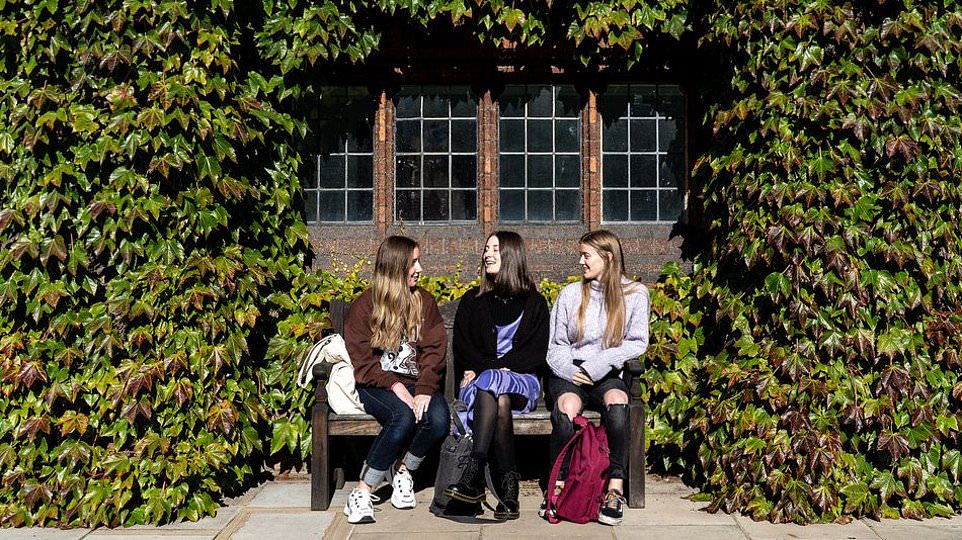
Overview
York St John (YSJ) occupies a site close to the historic city centre of York and a stone’s throw from York Minster, where graduation ceremonies take place in spectacular surroundings. Applications and admissions in 2023 both hit records for the second successive year, and the university’s courses are proving a hit with today’s careers-focused sixth-formers – with teacher training, nursing and allied health programmes to the fore. YSJ is one of the smaller universities in this guide, and so is more capable of delivering a university experience with a personal touch. Last year’s gold rating for student experience in the Teaching Excellence Framework bears this out, as does the university’s high ranking for student support under our analysis of this year’s National Student Survey results. YSJ caters for a more local student population than its city neighbour, with 60% of last year’s intake coming from Yorkshire and the North East. The opening of a health simulation suite has boosted facilities for the growing number of nursing and healthcare students, while degree apprenticeships for creative digital design professionals and broadcast and media systems engineers introduced from next September enhance YSJ’s presence in this key area, too.
London Metropolitan University

Overview
London Met has enjoyed some excellent scores in the National Student Survey (NSS) in recent years after sustained investment in the student experience. The university has reinvented itself and now looks optimistically to the future, launching a new school of the built environment last year to supply graduates to one of the capital’s key industries. The establishment of a new adult nursing degree also greatly expands its healthcare offering. London Met reflects the cosmopolitan nature of the capital city it serves, boasting one of the most diverse student bodies of any UK university. But the outcomes of the recent Teaching Excellence Framework were a mixed bag. Gold for student experience confirmed recent successes in the NSS, but a bronze for student outcomes was less good, with the university rated silver overall. Students are split between six academic schools – computing and digital media; human sciences; social sciences and professions; business and law; the built environment; and art, architecture and design. The latter is situated on the Aldgate campus, but the Holloway Road campus is far larger.
Hartpury University

Overview
Hartpury University, situated five miles from Gloucester, offers fewer than 40 degrees, with a focus on land and animal-related programmes and sports – both areas in which the university excels. High standards have been recognised with a triple gold award – covering student experience, student outcomes and an overall rating – in the 2023 Teaching Excellence Framework, secured by only 15% of institutions nationally. Courses can be broad (environmental science; agriculture; sport and exercise sciences) or very specific (racehorse performance and rehabilitation; human-animal interaction with psychology). They’re in demand, with applications hitting a new high for admissions in September 2023. Hartpury only achieved university status in 2018, but it has a history stretching back to 1948. It shares a campus with Hartpury College (rated outstanding by Ofsted), which offers A-levels, T-levels and diplomas – as well as the opportunity to move into higher education without ever ‘leaving’. Students have use of the 72-hectare Home Farm and four others nearby, which combine to make a fully fledged commercial farming business and are home to cows, sheep and arable land. The university punches well above its weight in inter-university competitions, notably rugby – with its semi-professional side finishing mid-table in the second-tier English championship last season.
Royal Agricultural University
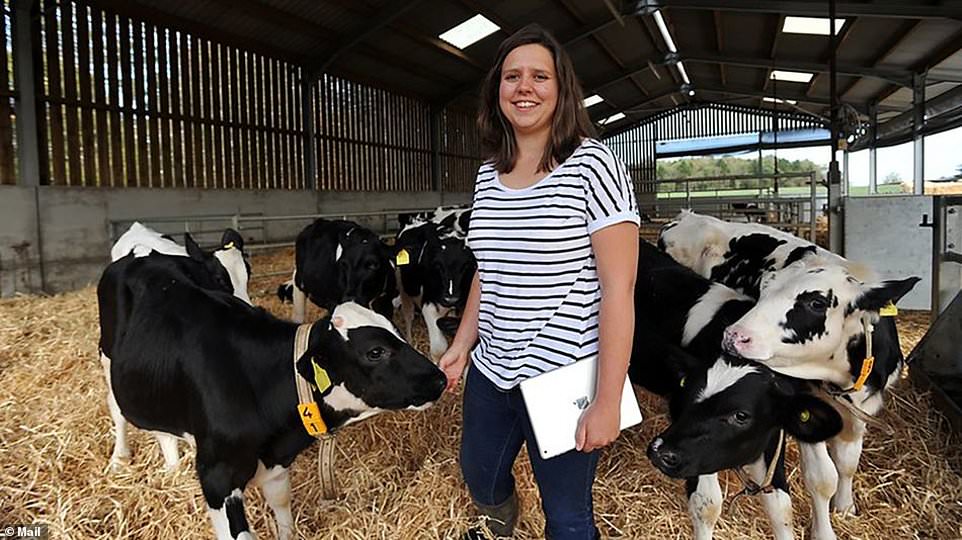
Overview
Celebrating its 180th anniversary next year, the Royal Agricultural University is one of the smallest institutions in this guide, specialising in land-based courses for the farmers and rural workers of tomorrow. The RAU aspires to be the leading small university in its field (no pun intended) but faces stiff competition from the likes of Harper Adams University, in particular. It offers seven core degrees (in agriculture, agricultural business management, business management, environment and sustainability, equine science and business, real estate, and rural land management) plus several complementary foundation degrees, foundation years, top-up courses and professional placement years. The university is working hard to grow the number of students its recruits from state schools by adding more science and business-based courses alongside the traditional farming fare. For many years, the RAU had the biggest proportion of privately educated students, outstripping even Oxford and Cambridge. Just under one third of the intake is drawn from the South West, but such is the reputation of the university – for which King Charles is the patron (and near-neighbour) – that it recruits well from across the UK, with just under 400 new students last September.
Arts University Plymouth

Overview
‘Run by artists and designers for artists and designers.’ So boasts Britain’s newest specialist arts university – and one of five that we profile and rank in this guide. It also hints at the intensely practical slant of courses at Arts University Plymouth (AUP), which is also comfortably the smallest university in this guide. AUP began life as the Plymouth Drawing School in 1856 and is one of three universities in this Devon coastal city. It was shortlisted for University of the Year in the 2024 Whatuni? Student Choice Awards, eventually coming fourth based on reviews from its students, who also rate the university’s personal touch consistently highly in the annual National Student Survey. Staffing levels are among the most generous, and the student body is comprised largely of students from backgrounds usually under-represented in higher education. The city-centre campus has 13,000 square metres of studios and workshops spread across four buildings. New partnerships with outside organisations and investments in equipment keep student life anchored in the real world. The compact undergraduate course portfolio of just 21 degrees includes six which have a distance-learning first year with a January start. Students on these courses study flexibly at home, in the studio or at one of AUP’s international host institutions for their first year, which they complete by the beginning of August.
Birkbeck, University of London

Overview
Birkbeck is one of only three universities that we profile which do not feature in our rankings. One of the constituent colleges of the University of London, Birkbeck is included in this guide because of its excellent provision of accessible, flexible and innovative higher education, but those qualities and the large number of part-time students that comes with them makes it very hard to compare Birkbeck to other institutions. The university offers a wide range of undergraduate, postgraduate, full-time and part-time programmes, with daytime classes now being offered alongside Birkbeck’s traditional evening teaching times. The university’s course portfolio is evolving all the time and the majority of Birkbeck’s growing student body undertake their studies alongside responsibilities outside of education – the university has a high population of mature students. To serve that population better, Birkbeck has made significant developments in the way it delivers teaching, with the introduction of new HyFlex technology set to revolutionise the way that students can engage in lessons remotely.
The Open University

Overview
With almost 200,000 students studying for 200 qualifications – mostly first degrees – across 400 modules, the Open University (OU) does higher education on a bigger scale than any other institution. It does virtually everything virtually. This is the original distance-learning university, set up by Harold Wilson’s 1960s Labour government, which has provided university education to more than 2.3m people over more than five decades. In recognition of its high quality courses and the outstanding – and long-standing – role the OU has played in delivering higher education to so many people, it is our University of the Year for Teaching Excellence. Delivering its courses online, students can work whenever and wherever they want. Three quarters of those enrolled are in work, but 10% of undergraduates are aged 17 to 21, for whom the OU can appear as an increasingly attractive option, with 120 credits (equivalent to studying full-time for a year) costing £7,272, compared to £9,250 in tuition fees plus living costs at a conventional university. There are no formal entry requirements, although access modules can help new learners establish if they are equipped for student life. Students can build credits over many years or they can study full-time, completing a degree in three years. The OU’s unique structure – with no students on campus – means we are unable to include it in our rankings, but where data is available, such as measuring student satisfaction and research quality, the OU has long shown it can compete with the best of the traditional universities.
University of the Highlands and Islands

Overview
The University of the Highlands and Islands (UHI) offers a unique higher education to 8,500 or so undergraduates. This is not the ‘bright lights, big city’ experience seen elsewhere, even at its larger campuses in Inverness and Perth. UHI brings university education to the people in one of the most remote and sparsely populated regions of Europe through a network of 12 campuses and 70 learning centres dotted around the mountains and islands of northern Scotland. The university’s decentralised structure makes it impossible to include in our rankings, but it is profiled in this guide due to the key public service it provides. Students can base themselves on one of the campuses, split their studies between home and campus, or study entirely online. There are campuses in the likes of Lerwick and Kirkwall in the north (UHI Shetland and UHI Orkney), in Stornoway (UHI North, West and Hebrides), the Isle of Skye (Sabhal Mor Ostaig) in the west and UHI Perth in the east. Sabhal Mor Ostaig is the only Gaelic-medium college in the world, and the course portfolio on other campuses also reflects the local culture, landscape and employment options.


